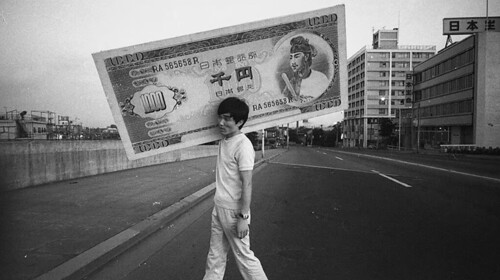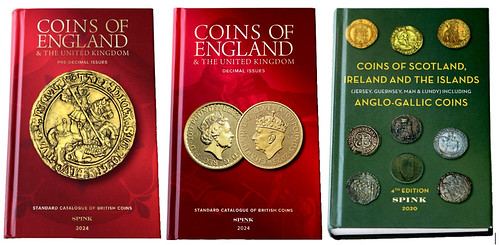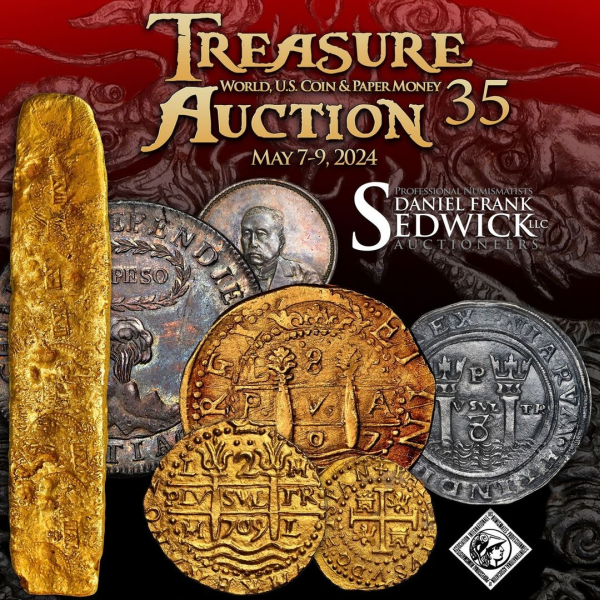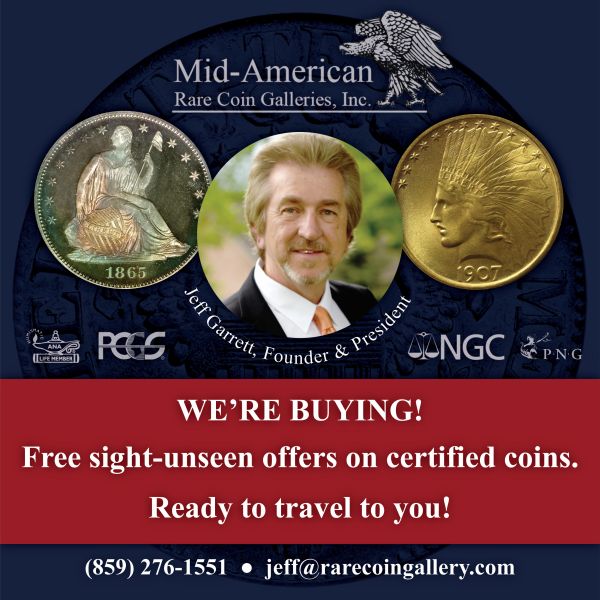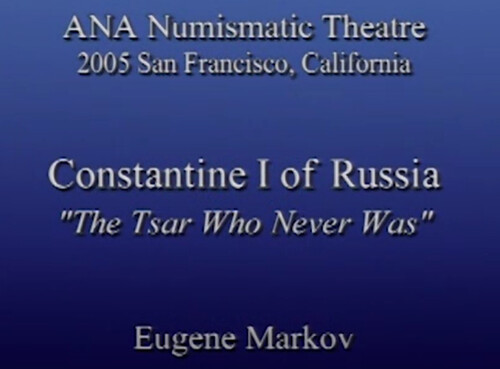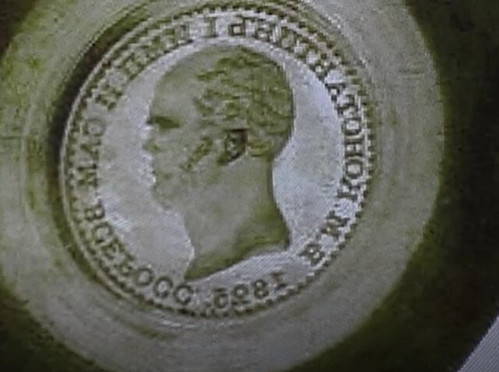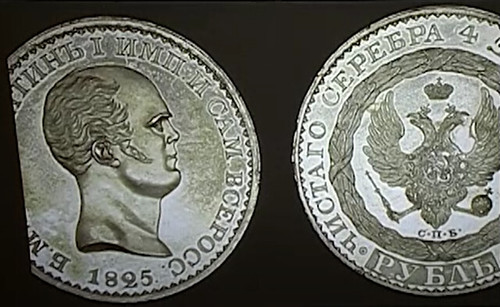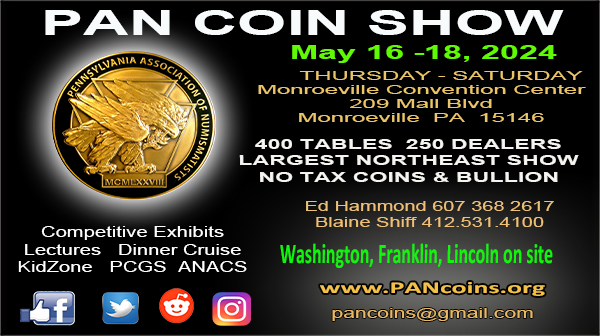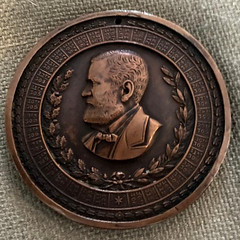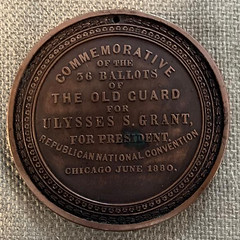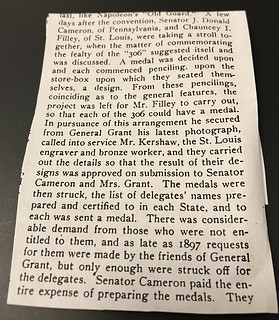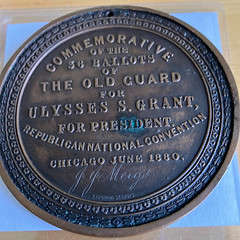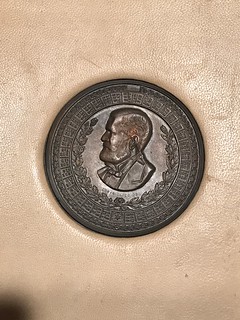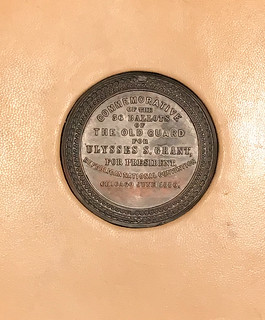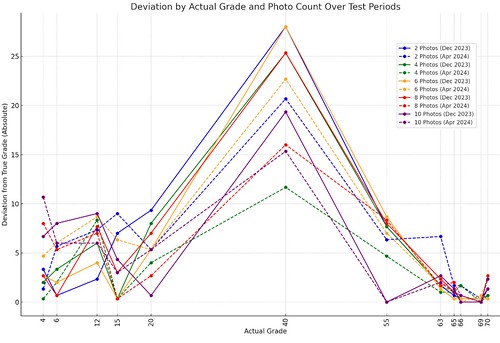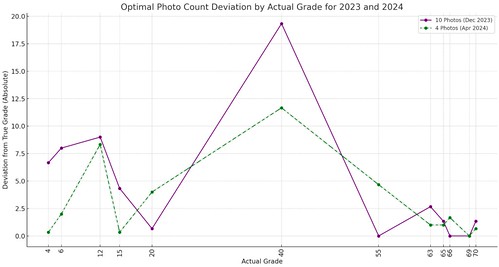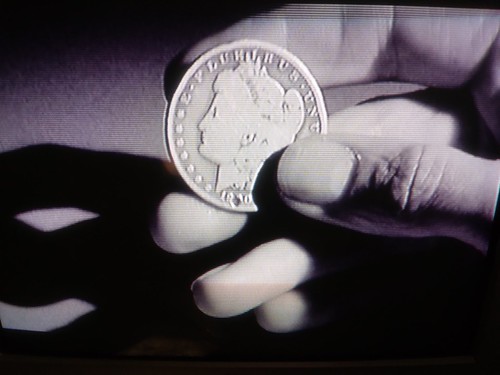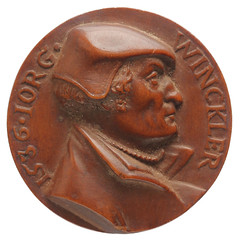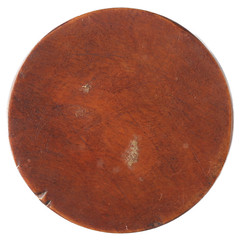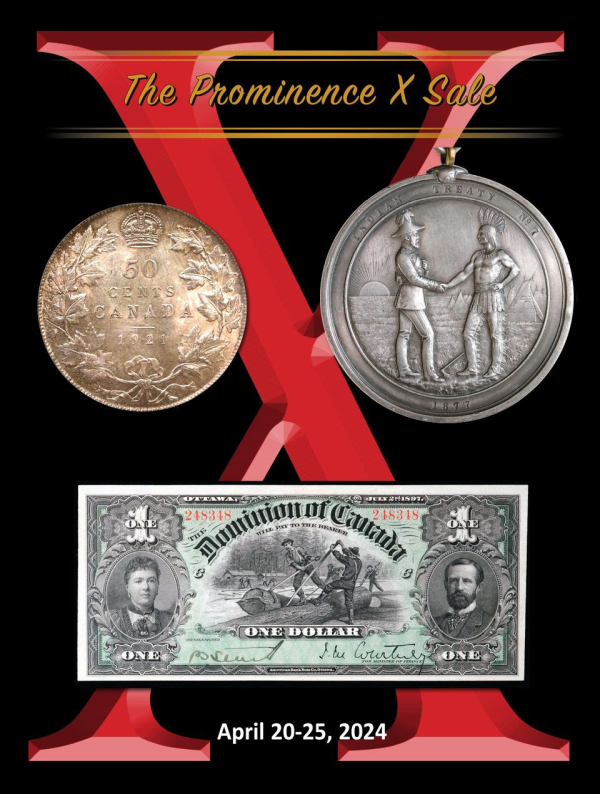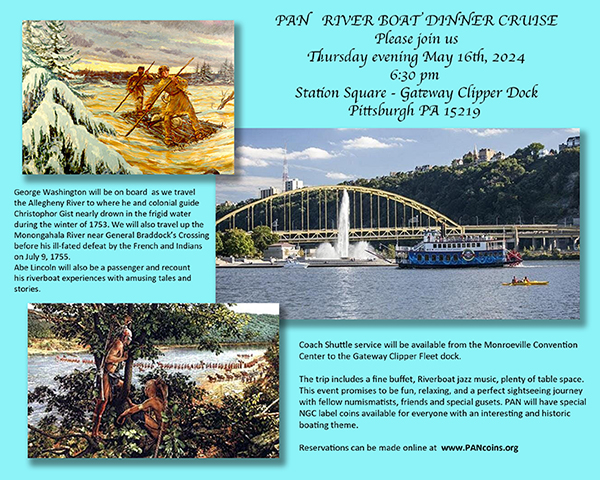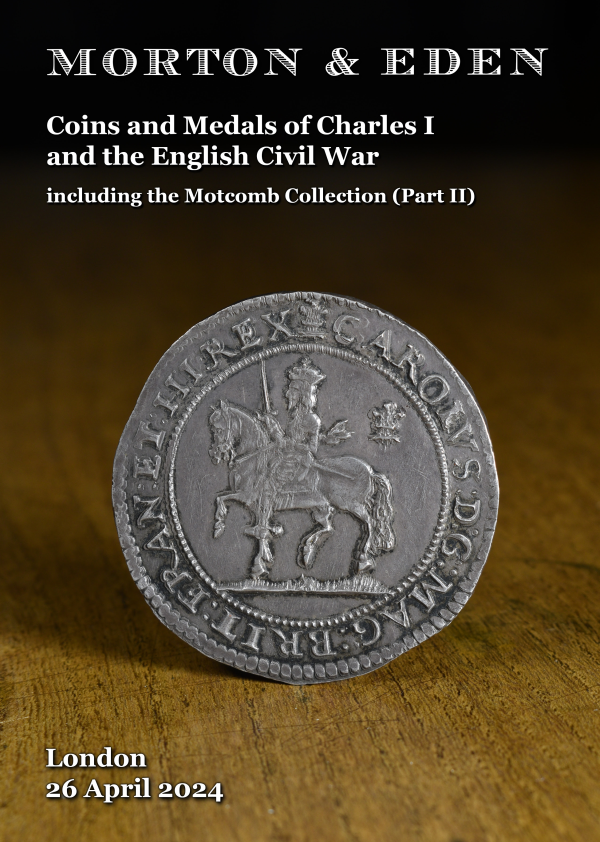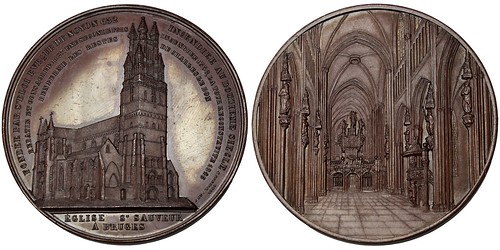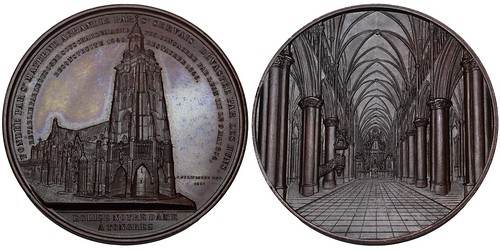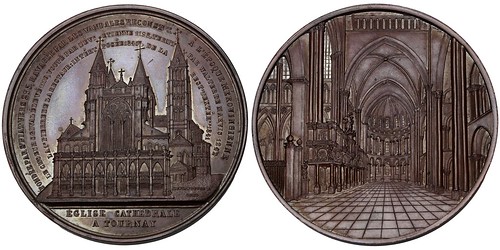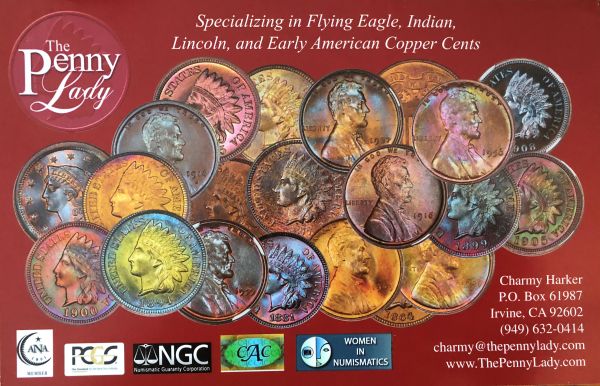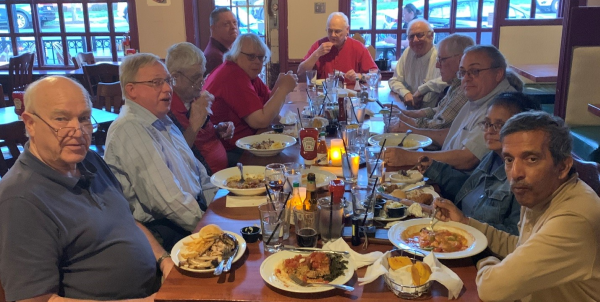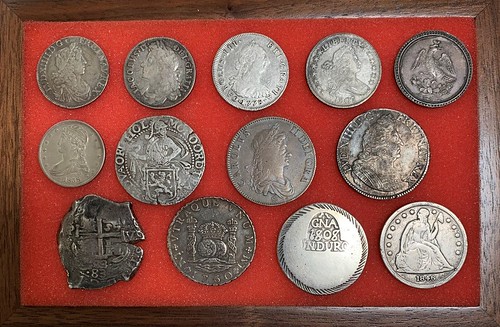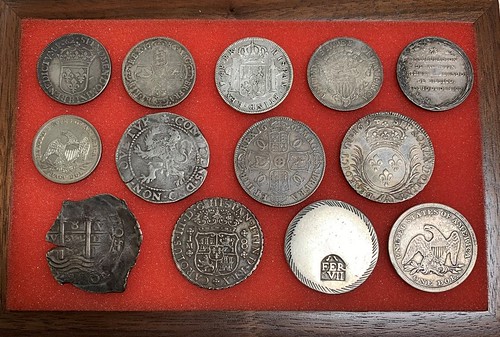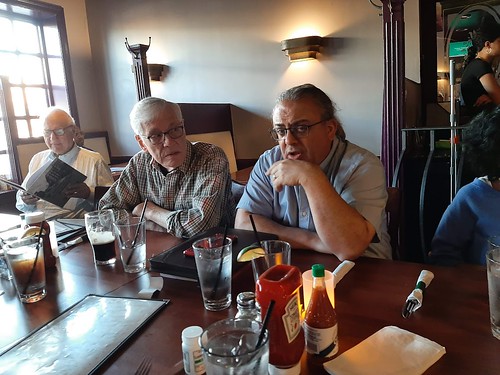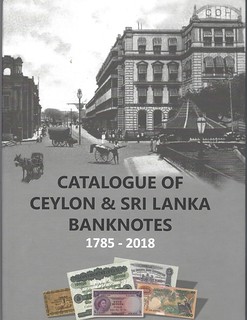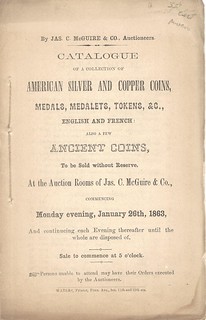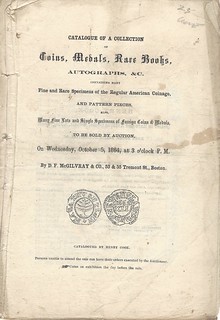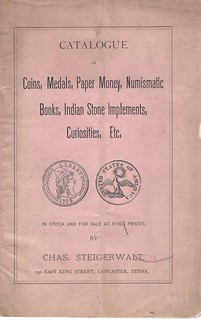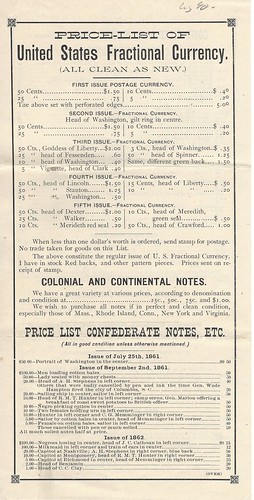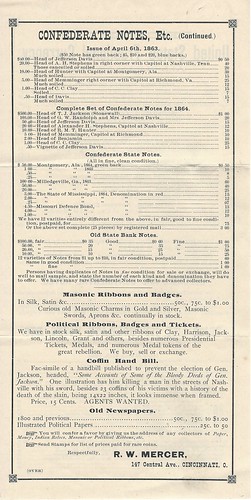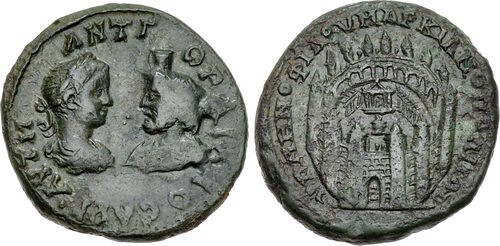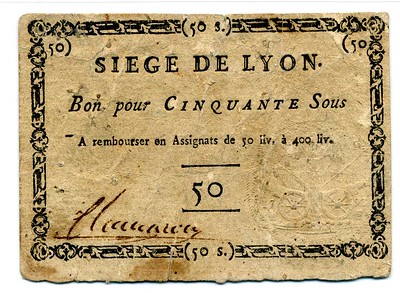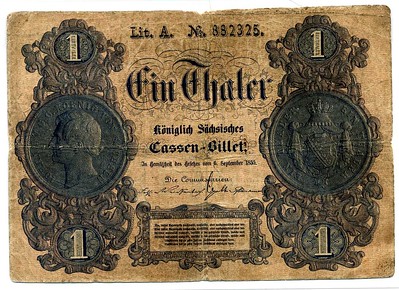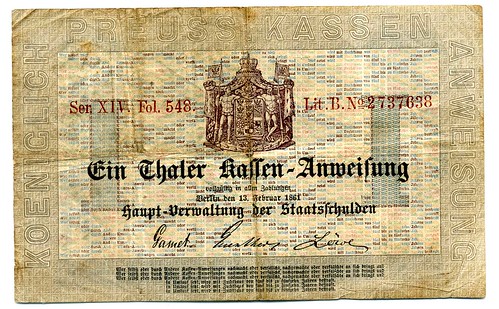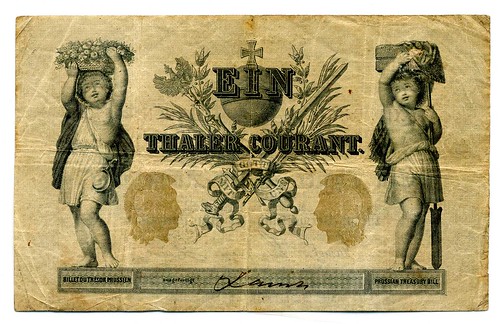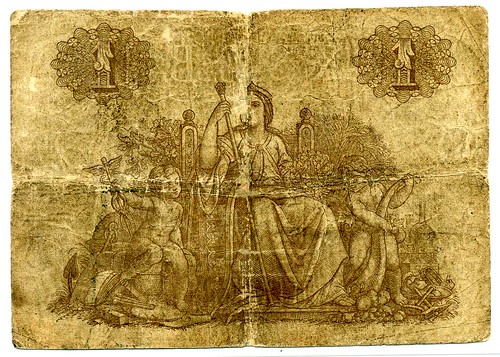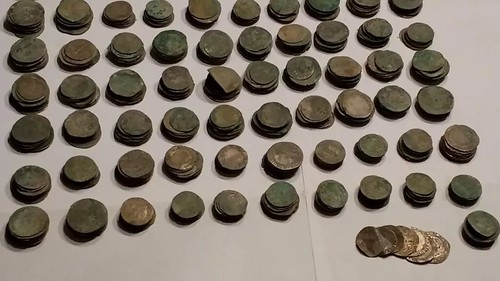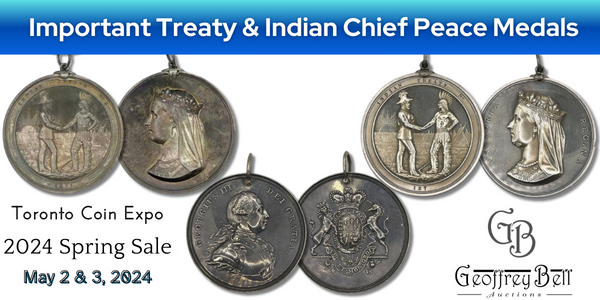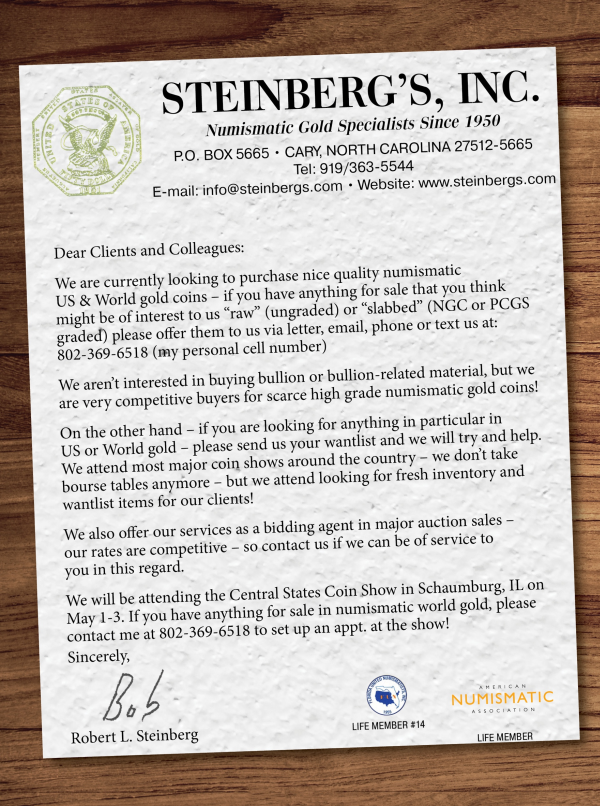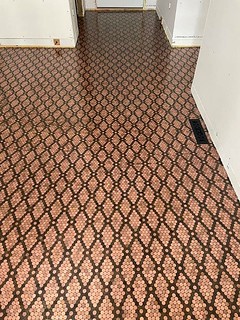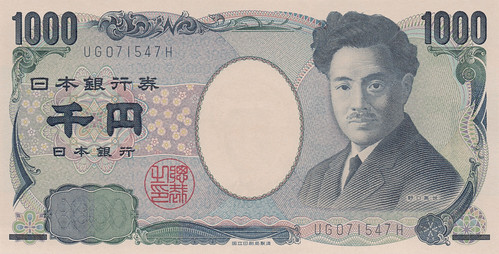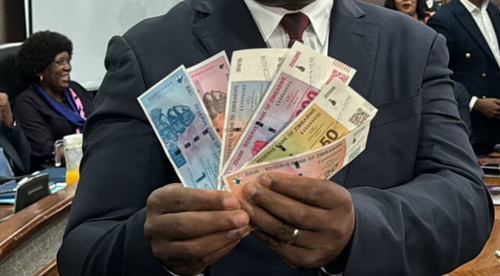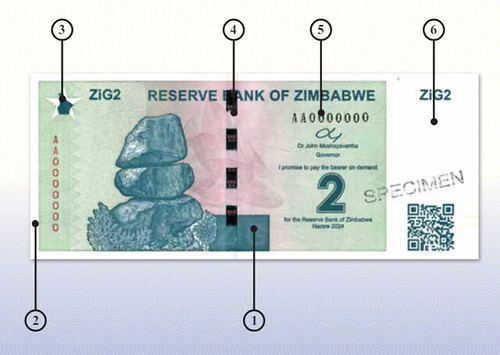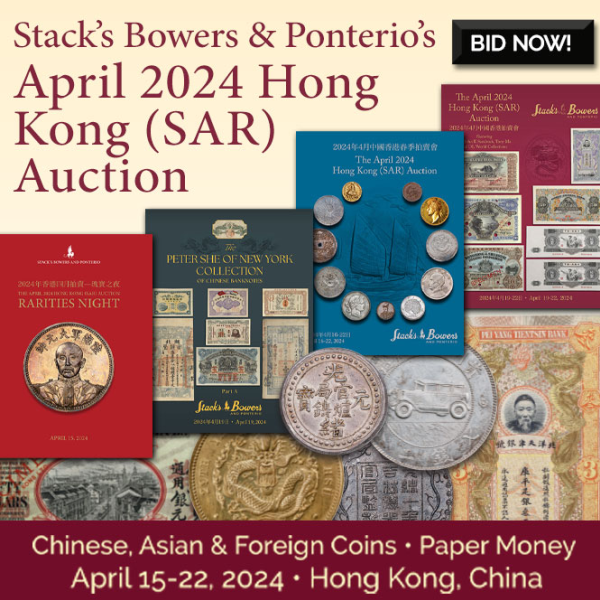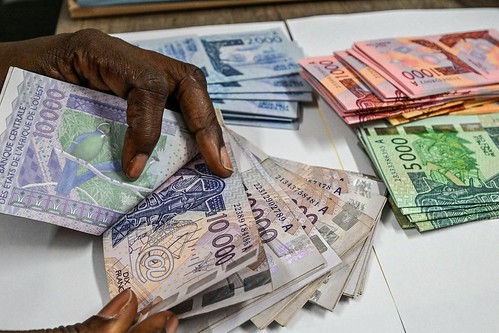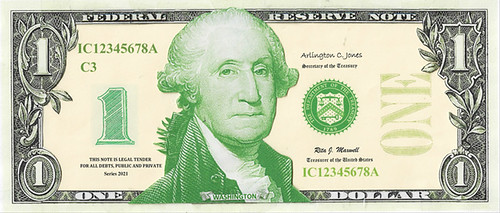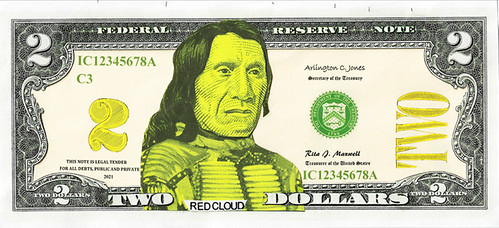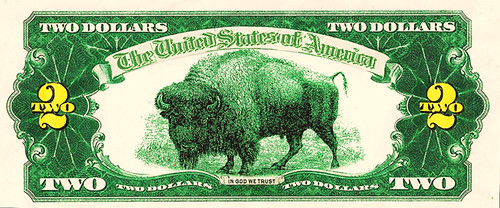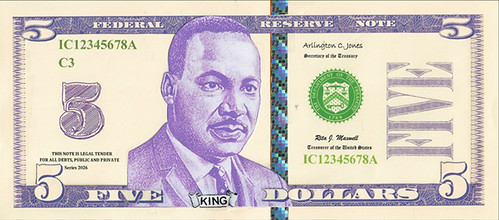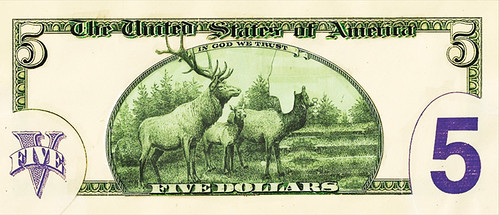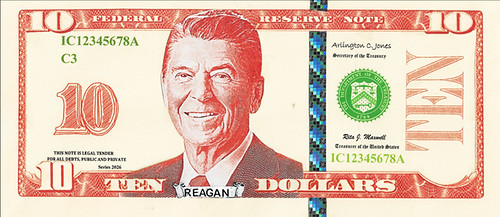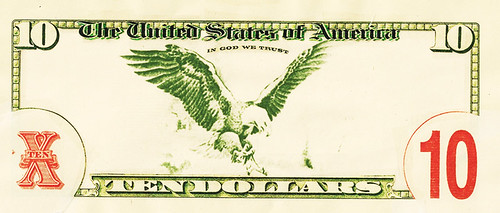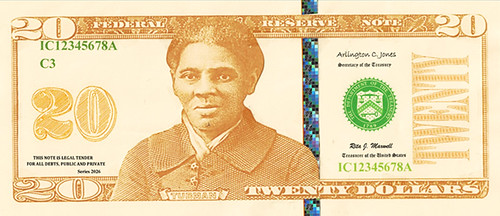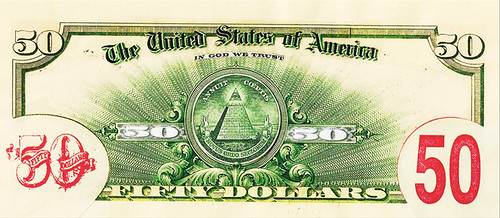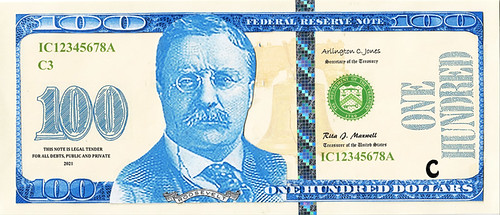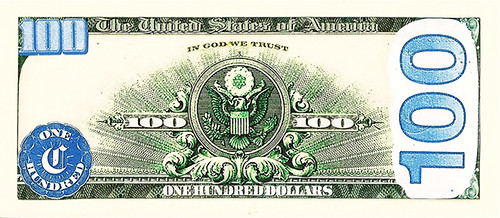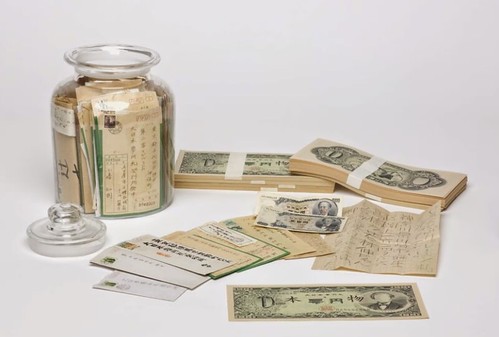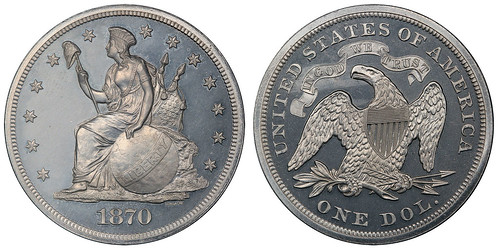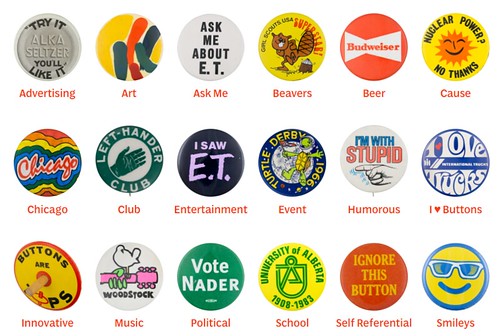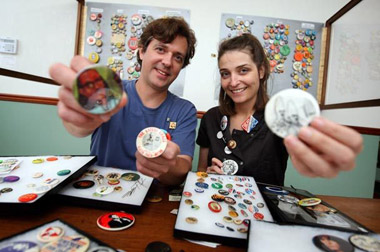
Visit our NBS Sponsors
About UsThe Numismatic Bibliomania Society is a non-profit association devoted to the study and enjoyment of numismatic literature. For more information please see our web site at coinbooks.org SubscriptionsThose wishing to become new E-Sylum subscribers (or wishing to Unsubscribe) can go to the following web page link MembershipThere is a membership application available on the web site Membership Application To join, print the application and return it with your check to the address printed on the application. Print/Digital membership is $40 to addresses in the U.S., and $60 elsewhere. A digital-only membership is available for $25. For those without web access, write to: Jeff Dickerson, Treasurer AsylumFor Asylum mailing address changes and other membership questions, contact Jeff at this email address: treasurer@coinbooks.org SubmissionsTo submit items for publication in The E-Sylum, write to the Editor at this address: whomren@gmail.com BUY THE BOOK BEFORE THE COINSale CalendarWatch here for updates! |
- WAYNE'S WORDS: THE E-SYLUM APRIL 21, 2024
- SOVEREIGN RARITIES ACQUIRES SPINK PUBLICATIONS
- NEW BOOK: NEW ZEALAND CATALOGUE 2024
- NEW BOOK: COINS OF INDIA
- NEW BOOK: 1920 UPPER SILESIAN EMERGENCY MONEY
- ST. LOUIS ANCIENT COIN STUDY GROUP VIDEOS
- VIDEO: CONSTANTINE I OF RUSSIA
- MORE ON THE GRANT REUNION BOOK AND MEDAL
- REVISITING NUMI
- NOTES FROM E-SYLUM READERS: APRIL 21, 2024
- ACEF TO LAUNCH SOCIAL MEDIA CAMPAIGN
- VOCABULARY TERM: PINBACK
- OSCAR GOTTLIEB SCHILKE (1903-1965)
- CINCINNATI COLLECTOR HENRY CLAY EZEKIEL
- SBG ACQUIRES WORLD BANKNOTE AUCTIONS
- DONIVAN FLOYD WINS 2024 PNG SCHOLARSHIP
- NUMISMAGRAM MEDAL SELECTIONS: APRIL 21, 2024
- WAYNE'S NUMISMATIC DIARY: APRIL 21, 2024
- DORSET ENGLISH CIVIL WAR COIN HOARD
- COLLECTING COINS FROM TRASH
- PAVING A FLOOR WITH COINS
- GOLD, SILVER, AND THE ELUSIVE GOLD STANDARD
- NEPAL CROP MAKES JAPANESE BANKNOTE PAPER
- ZIMBABWE GOLD NOTES INTRODUCED
- SINGAPORE STARTUP'S PHYSICAL BITCOIN BANKNOTES
- THE HISTORY AND FUTURE OF THE CFA FRANC
- NEW PORTRAIT IDEAS FOR U.S. CURRENCY
- JAPANESE MONEY ARTIST KATSUHIKO AKASEGAWA
- LOOSE CHANGE: APRIL 21, 2024
- THE BUTTON MUSEUM
Content presented in The E-Sylum is not necessarily researched or independently fact-checked, and views expressed do not necessarily represent those of the Numismatic Bibliomania Society.
WAYNE'S WORDS: THE E-SYLUM APRIL 21, 2024
 New subscribers this week include:
Mark Morris of CoinCraft via Richard Lobel,
Ian Goldbart of Sovereign Rarities via Steve Hill,
and Bob Conrad.
Welcome aboard! We now have 7,283 subscribers.
New subscribers this week include:
Mark Morris of CoinCraft via Richard Lobel,
Ian Goldbart of Sovereign Rarities via Steve Hill,
and Bob Conrad.
Welcome aboard! We now have 7,283 subscribers.
Thank you for reading The E-Sylum. If you enjoy it, please send me the email addresses of friends you think may enjoy it as well and I'll send them a subscription. Contact me at whomren@gmail.com anytime regarding your subscription, or questions, comments or suggestions about our content.
This week we open with a book publishing deal, three new books, updates from the Newman Numismatic Portal, notes from readers and more.
Other topics this week include coins of New Zealand and India, fighting numismatic counterfeiters, pinbacks and buttons, Oscar Schilke, Henry Clay Ezekiel, architectural medals, an English Civil War coin hoard, finding (lots) of coins in trash, and the CFA Franc.
To learn more about Coins of England, the St. Louis Ancient Coin Study Group, the Tsar who never was, AI coin grading progress, America's Foreign Coins, Augustus Sage's Catalog No. 1, the 1793 Siege of Lyon, making paper for Japanese banknotes, and Japanese money artist Katsuhiko Akasegawa, read on. Have a great week, everyone!
Wayne Homren
Editor, The E-Sylum
SOVEREIGN RARITIES ACQUIRES SPINK PUBLICATIONS
Three iconic publications on U.K. coinage have been acquired from SPINK by Sovereign Rarities Ltd. Here's the announcement. -Editor
Coins of England & the United Kingdom, Decimal Issues
Coins of Scotland, Ireland and the Islands, including Anglo-Gallic Coins
As of 16th April 2024 Sovereign Rarities Ltd, London, UK, has acquired the above three publications from Spink & Son Ltd, who in turn acquired the publications in 1997 from B. A. Seaby Ltd.
B A Seaby had originally produced a more basic one volume catalogue dating from the late 1920s, expanding to Scottish and Irish later on.
The splitting of the decimal and pre-decimal denominations was a more recent innovation of the last decade as the modern issue era became more expansive and continues to grow under King Charles III.
The new release of the pre-decimal and decimal catalogues remains a highly anticipated annual event in the worldwide numismatic calendar, as British coins are so internationally collected in the modern era.
The acquisition by Sovereign Rarities Ltd will see the next edition for 2025 produced under their branding for the first time and Managing Director Ian Goldbart commented:
‘We are delighted to have acquired the three titles, which we intend to continue to produce in the coming years. In one form or another, Coins of England has been issued for almost 100 years. Having first acquired a copy, when I started collecting in 1976, to this day, the book remains a staple part of my numismatic diet.'
To acquire a copy of the 2024 pre decimal or decimal editions or the 2020 Coins of Scotland, Ireland, the Islands and Anglo Gallic issue (last issued in 2020) please visit our website www.sovr.co.uk for our contact details or email us at info@sovr.co.uk
NEW BOOK: NEW ZEALAND CATALOGUE 2024
Renniks is offering the new edition of The John Bertrand New Zealand Coin and Banknote Catalogue. Here's the information from their site. The book may be available elsewhere as well. -Editor
The John Bertrand New Zealand Coin and Banknote Catalogue 2024
$24.95
 This catalogue features important information regarding all New Zealand coins issued from 1933 and includes values with retail prices given in five grades for the pre-decimal issues. A full listing of decimal issues is also included.
This catalogue features important information regarding all New Zealand coins issued from 1933 and includes values with retail prices given in five grades for the pre-decimal issues. A full listing of decimal issues is also included.
The 2024 edition is edited by Jared H. Thornton and contains many revisions and price updates for new and previous coin issues.
The catalogue contains a Checks, Discount & Special Purpose Tokens
section, courtesy of Martin Purdy FRNSNZ, and again includes five pages of information on all the major coin varieties
, also compiled by Martin Purdy, all being shown with values in the category pages. New Zealand banknotes are covered from 1934 to present with prices given in up to six grades, including first and last prefixes.
The catalogue as always includes simplified listings of Tradesmen's Tokens, Communion Tokens, Internment Camp Tokens, Checks, Discount & Special Purpose Tokens and Mint Rolls.
WEIGHT: .2 kg
DIMENSIONS: 21 × 15 × .5 cm
AUTHOR:
JARED H THORNTON
For more information, or to order, see:
The John Bertrand New Zealand Coin and Banknote Catalogue 2024
(https://renniks.com/shop/the-john-bertrand-new-zealand-coin-and-banknote-catalogue-2024/)
NEW BOOK: COINS OF INDIA
A new book has been published on the coins of India. Unfortunately, these articles don't mention where to purchase a copy. -Editor
Hinduja Group chairman Ashok Hinduja launched a book ‘Coins of India' based on Indian American numismatist Dr Navin Shah's collection of over 2600 rare coins spanning 600 BC to 2022 AD representing several dynasties, Mughals and British rule.
The treasure trove of coinage from 600 BC to post-independence of India has been researched, documented and compiled into the book by author and archaeologist Manish Verma. The book includes important maps to understand the territories of the dynasties and rulers of the rich Indian history.
History in India has no monetary value. India has not preserved its rich and glorious cultural legacy for the new generation. No one seems to be interested in the intrinsic value of the coins and their rule in history and culture,
rued Dr Shah.
The book is a comprehensive guide to the rich history of Indian coins describing the evolution of coinage itself and showing its significance in economic history, evolution of Indian currency through the ages as well as cultural and political history of the respective period,
he said.
The 2600 rare coins collection represents all the ruling dynasties including the extremely rare coins from the 3 BC era of the Kumudsena rulers of Ayodhya.
Most coins in the collection are in mint condition. The local and imperial punch-marked coins, early uninscribed cast copper of Satavahanas, Kushanas, Western Kshatrapas, Indo Greek, British India silver coins and post-independence commemorative coins are amongst the 2600 coins representing each era of Indian history, explained the leading numismatist expert Manish Verma.
To read the complete articles, see:
'Coins Of India': Book Showcasing Numismatist Dr Navin Shah's Collection Of 2600 Rare Coins Released
(https://www.freepressjournal.in/mumbai/coins-of-india-book-showcasing-numismatist-dr-navin-shahs-collection-of-2600-rare-coins-released)
‘Coins of India,' tracing rich tapestry of Indian numismatics, launched
(https://www.americanbazaaronline.com/2024/04/17/coins-of-india-based-on-navin-shah-collection-456528/)
NEW BOOK: 1920 UPPER SILESIAN EMERGENCY MONEY
Here's a Google-translated version of a Geldscheine-Online article on a new book about 1920's notgeld in the Upper Silesia region of Poland. -Editor
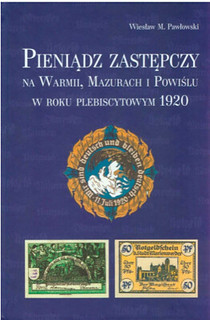 Wieslaw M. Pawlowski:
Wieslaw M. Pawlowski:
Pieniadz Zastepczy na Warmii, Mazurach i Powislu w Roku Plebiscytowym 1920
144 pages, illustrated throughout in color,
Format 165 mm x 240 mm, hardcover with thread binding, Lublin 2023,
Price: 35.00 euros.
ISBN 978-83-945629-8-4.
The book title is translated as Replacement money in Warmia, Masuria and West Prussia in the plebiscite year 1920
. The author, who has already become known to us through his catalog about the Upper Silesian emergency money, presents another work on German-Polish notaphilia with the new catalog.
A short introductory text explains what the vote in East Prussia was all about. The banknotes from 19 municipalities as well as a coin issue will be presented.
Although the book was written in Polish, you do not need any knowledge of the Polish language or a dictionary to work with it. For each place of issue, the German community name is given first and then the current Polish one.
All emergency banknotes are presented according to the same scheme. The procedure will be demonstrated using the example of number 01 Allenstein/Olsztyn. First, the 10 and 50 Pfennig notes including variants are shown. The magistrate is named as the issuer, followed by the issue date 04/1/1921
, the name of the artist Paul Tusche
and the printing company Flemming – Wiskott AG Glogau
, then the size of the note and the watermark – with an image – of the paper used. Differences in the size of the key figures are then indicated. Then follows a concordance list with the corresponding catalog numbers for Funk, Grabowski, Grzywocz, Kapinski, Keller, Menzel, Podczaski, Silkorski, Suchanek, Tieste and PUZ. The series designed by Heinz Schiestl is also presented.
So that non-Polish-speaking users of the book can also get along easily, the author has presented the information given in pictures. A map of the voting area with the issuing locations completes the display. After the catalog section, the German banknote texts will be translated into Polish. Postcard images, images of voting stamps and information about the signatories of the stamps complete the catalog section. In the appendix you will find an extensive bibliography.
The author has refrained from evaluating the vouchers - these are usually serial vouchers. However, this does not diminish the good overall impression of the work.
The book was printed on high quality paper. All notes and coins are shown in color and are of very good quality.
You can tell from the book that it was written with great attention to detail. The catalog is recommended to every collector of German emergency money. With a circulation of only 750 copies, the catalog will certainly be sold out quickly. It can be obtained directly from the author, email: notgeld-wmp@wp.pl.
To read the complete article, see:
Neuer Katalog zu deutschen Abstimmungsscheinen im heutigen Polen
(https://www.geldscheine-online.com/post/neuer-katalog-zu-deutschen-abstimmungsscheinen-im-heutigen-polen)
ST. LOUIS ANCIENT COIN STUDY GROUP VIDEOS
The latest addition to the Newman Numismatic Portal is a group of St. Louis Ancient Coin Study Group videos. Project Coordinator Len Augsburger provided the following report. -Editor
St. Louis Ancient Coin Study Group Videos on Newman Portal
The Newman Portal has added videos of meetings of the St. Louis Ancient Coin Study Group, covering the years 2021-2024. Presentation topics range from ancient to medieval coinage and include a wide variety of speakers. A recent presentation, by Chip Vaughn, focused on coinage under Marcus Aurelius and illuminates ancient Roman history using the numismatics of the period. This group meets monthly in St. Louis, on the third Thursday.
Image: Slide from the Chip Vaughn presentation to the St. Louis Ancient Coin Study Group, February 2024
Link to St. Louis Ancient Coin Study Group meeting presentations on Newman Portal:
https://nnp.wustl.edu/library/multimediadetail/552485
Link to St. Louis Ancient Coin Study Group Facebook page:
https://www.facebook.com/groups/1429818327056327
VIDEO: CONSTANTINE I OF RUSSIA
The David Lisot Video Library on the Newman Numismatic Portal can be found at:
https://nnp.wustl.edu/library/multimediadetail/522852
We highlight one of his videos each week in The E-Sylum. Here's one from 2005 with Eugene Markov speaking about the 1825 Russian coins of Grand Duke Constantine Pavlovich. -Editor
History and mystery of the Russian coins of Grand Duke Constantine Pavlovich from 1825. The story includes: how Constantine proved his bravery as a young man The death of his father Alexander The confusion of the succession of leadership between Constantine and his brother Nicholas
Speaker(s): Eugene Markov.
To watch the complete video, see:
Constantine I of Russia, the Tsar Who Never Was
(https://nnp.wustl.edu/library/book/557181)
MORE ON THE GRANT REUNION BOOK AND MEDAL
Jerry Nashorn submitted these notes on the medal discussed last week, honoring the Grant Re-Union Dinner for the Old Guard of the 306 delegates who stuck with Grant until the bitter end of the 1880 Republican National Convention. Thanks. -Editor
I can provide some additional information concerning the 1893 booklet that includes medals relating to the 1880 Republican convention. The medal is an electrotype that was produced in1880 or 1881 and distributed to the Old Guard delegates who supported Grant. According to an 1888 article that originated with a St. Louis newspaper and was reprinted by the New York Times, the medal was the brainchild of two prominent Grant supporters, Senator Don Cameron of Pennsylvania and Chauncey Filley, a former mayor of St. Louis. An encyclopedia of Missouri history published in 1901 and available on Google books also has an entry concerning the medal. According to this source, Cameron paid for the medals while Filley arranged for its production by the James Kershaw engraving company of St. Louis, including securing from Grant an up to date photograph to be used for the portrait.
The versions of the medal given to the Grant loyalists, as opposed to those used in 1893, are engraved with the name of the recipient. Attached is a photo of an example I bought on eBay a number of years ago. It was presented to John J. Meigs, who had been a delegate from Elko County, Nevada. Meigs was born in Vermont in 1838. He graduated from Harvard Medical School in 1860 and served as a surgeon in a Vermont regiment during the Civil War. At some point afterwards, he settled in Nevada but by the mid 1890s, he had moved to Oakland where he lived until about 1910. He spent the remaining years of his life in Stockton, dying in 1922.
Joel Orosz published his 135th "The Numismatic Bookie" column about this topic in the August 15, 2022 issue of Coin World. He explains the delegates' battle at the Convention, and the fact that the booklet does not hold two Grant Medals, but rather two cliches, one of the medal's obverse, and one of the medal's reverse. -Editor
To read the earlier E-Sylum article, see:
GRANT REUNION BOOK AND MEDAL
(https://www.coinbooks.org/v27/esylum_v27n15a16.html)
REVISITING NUMI
Justin Hinh created an app using OpenAI's ChatGPT4 platform to provide coin identification and grading estimates. He submitted this update, which examines improvements in its grading performance. Thanks - very interesting. -Editor
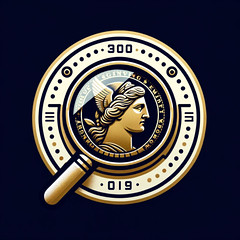 As a coin collector and technology nerd, in late 2023 I developed Numi,
an AI-powered chatbot that leverages the advanced capabilities of
OpenAI's GPT-4 vision model to assist coin collectors in identifying
and grading their coins. It's been fascinating seeing the exponential
growth of Artificial Intelligence, so I created Numi to test AI's abilities to tackle one of the biggest barriers to new collectors in coin
collecting. Throughout Numi's development, I became more and more
convinced that AI is going to fundamentally change the future of the
hobby.
As a coin collector and technology nerd, in late 2023 I developed Numi,
an AI-powered chatbot that leverages the advanced capabilities of
OpenAI's GPT-4 vision model to assist coin collectors in identifying
and grading their coins. It's been fascinating seeing the exponential
growth of Artificial Intelligence, so I created Numi to test AI's abilities to tackle one of the biggest barriers to new collectors in coin
collecting. Throughout Numi's development, I became more and more
convinced that AI is going to fundamentally change the future of the
hobby.
Testing Numi With OpenAI's Latest GPT-4 Update
I had a hypothesis that more data given to the AI would yield more accurate grading results. In December 2023 I ran a series of tests on each grade using 2 to 10 photos per coin. Following OpenAI's recent April 2024 update to their GPT-4 model, which powers Numi's AI capabilities, I conducted another series of tests on Numi's grading accuracy.
I then ran statistical analyses to assess the impact on Numi's performance and compared its grading accuracy between the December 2023 and April 2024 test results.
Determining the Optimal # of Photos for Accurate Grading
A key aspect of my analysis focused on identifying the optimal number of coin photos users should upload to achieve the most accurate grading results. In December 2023, my tests indicated that uploading 10 photos yielded the best accuracy across all coin grades. This aligned with my hypothesis that more data = better. However, after the GPT-4 update in April 2024, that number had changed, with just 4 photos now providing the most precise grading outcomes.
Just How Much Did Numi Improve?
To measure Numi's accuracy and any improvements, I calculated the Mean Absolute Deviation (MAD) – a metric that represents the average deviation between Numi's predicted grades and the actual, expert-assigned grades. In December 2023, Numi's MAD was 5.39, indicating that, on average, its predictions deviated by approximately 5 points from the actual coin's grade (for example, coin grade is AU-55 but Numi predicted MS-60). By April 2024, following the GPT-4 update, Numi's MAD score decreased to 3.64, representing a substantial 32.47% increase in overall accuracy.
I suspected that Numi would be more accurate given the updates, but I was not expecting this much of a change. While the GPT-4 vision model still struggles immensely with medium-graded coins [Around XF-40], Numi performed exceptionally well for very low and very high-graded coins, with the biggest improvements seen for very low-graded coins.
The Future of AI in Numismatics
After seeing these results, I am even more convinced that Artificial Intelligence will revolutionize the field of coin collecting. As models like GPT-4 continue to improve, AI tools will become increasingly valuable for collectors seeking to expand their knowledge and make informed decisions about their collections. While Numi itself will most likely not end up being the go-to tool for collectors in the future, it serves as powerful evidence of where the hobby is heading.
The progress Numi has made in a short time is encouraging, and I look forward to testing its capabilities as AI models advance. By making coin grading more accessible and user-friendly, AI has the potential to attract new enthusiasts to the hobby and help experienced collectors deepen their understanding and appreciation for numismatics.
To read the earlier E-Sylum articles, see:
NUMI: AI-POWERED COIN IDENTIFICATION APP
(https://www.coinbooks.org/v26/esylum_v26n47a10.html)
https://www.coinbooks.org/v26/esylum_v26n47a11.html
(https://www.coinbooks.org/v26/esylum_v26n47a11.html)
UPDATE: AI-POWERED APP NUMI
(https://www.coinbooks.org/v26/esylum_v26n52a12.html)
NOTES FROM E-SYLUM READERS: NOVEMBER 26, 2023 : Numi on the Coin World Podcast
(https://www.coinbooks.org/v26/esylum_v26n48a15.html)
THE BOOK BAZARRE
NOTES FROM E-SYLUM READERS: APRIL 21, 2024
Night Train to Paris Dollar
Justin J. Perrault writes:
"I know we frequently like to mention when specific coins are used in a film. The other night I was watching "Night Train to Paris", a 1964 drama, mystery, and thriller. The story revolves around former OSS officer Alan Holiday, portrayed by Leslie Nielsen, who resides in London. On New Year's Eve, he is visited by Catherine Carrel (played by Aliza Gur), who claims to be a close friend of Jules Lemoine, a comrade from Holiday's wartime days. It is at this point when Carrell presents Holiday with an old worn Morgan Dollar she attributes to his connection with Lemoine in the Korean War. Lemoine urgently requests that Holiday undertake a secret mission in Paris. The plot thickens as Lemoine provides Holiday with a reel of tape, keeping a fake one for himself to deceive enemy agents. However, Lemoine is killed, and the fake tape is stolen. To maintain the ruse, Holiday poses as an assistant to photographer Louis Vernay, accompanied by three models. The film unfolds with espionage, danger, and suspense as Holiday navigates the treacherous path to Paris.
Attached is a snapshot from the film showing the coin that played a very brief role. Not entirely sure why they had the hole going through the year, but it appears to be a 1900 mintage."
Thanks - you never know when a piece of money will show up on film or TV. -Editor
Dick Johnson's Medal Artist Databank
Len Augsburger of the Newman Numismatic Portal writes:
"Over many years, Dick Johnson created a database of American engravers, essentially a comprehensive update of the Forrer biographical dictionary, targeted at American artists. The files for A-I have survived, but the others are a mystery, which we could not locate via the Wayback Machine. Can an E-Sylum reader help?
Link to Dick Johnson Databank, A-B: https://dickjohnsonsdatabank.com/a-b1.html
Link to Dick Johnson Databank, C-F: https://dickjohnsonsdatabank.com/c-f1.html
Link to Dick Johnson Databank, G-I: https://dickjohnsonsdatabank.com/g-i1.html
Link to Dick Johnson Databank (Bibliography): https://dickjohnsonsdatabank.com/bibliography.html
Link to Leonard Forrer biographical dictionary on Newman Portal: https://nnp.wustl.edu/library/booksbyauthor/511633
Can anyone help? -Editor
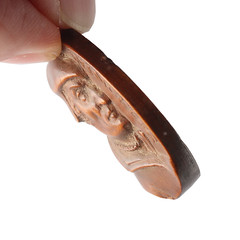 Query: 1536 IORG WINCKLER Medallic Item
Query: 1536 IORG WINCKLER Medallic Item
David Levy writes:
"Dear fellows, I came across the item and any help in attributing it will be more than welcome. It seems to be a model for a medal obverse, or perhaps a trial. It is made of wood, 4.87g, 35mm of diameter and 8mm at its maximum height. Legend says 1536. IORG. WINCKLER. I could not find any similar item nor information of a Georgius Winckler living around 1536. Thanks in advance for any comments."
Interesting item. Thoughts, anyone? -Editor
ACEF TO LAUNCH SOCIAL MEDIA CAMPAIGN
The Anti-Counterfeiting Educational Foundation is going on the offensive to fight against scammers in the coin and bullion market, meeting the enemy where they increasingly ply their trade - online. Here's the announcement. -Editor
ACEF budget to fund robust public education program
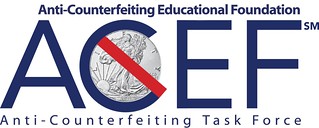 The Anti-Counterfeiting Educational Foundation's Board of Directors has approved a $377,000 budget to
fund a robust public education program that includes presence on popular social media platforms such
as YouTube, Facebook, and Instagram as well as a greatly enhanced website featuring a
The Anti-Counterfeiting Educational Foundation's Board of Directors has approved a $377,000 budget to
fund a robust public education program that includes presence on popular social media platforms such
as YouTube, Facebook, and Instagram as well as a greatly enhanced website featuring a Trusted
Experts Directory,
and engagement in traditional print media.
We have to be pro-active in reaching out to people of all ages interested in buying precious metals
coins and other numismatic collectibles and arm them with knowledge about how to avoid counterfeits
and other scams that especially target uninformed buyers,
said ACEF President John Albanese.
Nobody wants to be defrauded. Unfortunately, people new to the marketplace that become victims of
counterfeiters quickly lose interest and they miss out on good investments and the joys of a wonderful
hobby,
Albanese added.
ACEF Vice President Barry Stuppler described the new budget as realistic in light of the challenges we
face and the costs involved in producing and placing the educational information to meet our
objectives.
Stuppler, who is spearheading ACEF's fundraising campaign, noted that the ACEF Board is
willing to roll up its collective sleeves and work to implement the educational programs, but we need
the support of the entire numismatic community,
he said. ACEF is funded entirely by donations.
During its April 10 meeting the ACEF Board elected two new members and named an executive director. Brett Charville and Don Kettering are the newly elected board members. They replace Jack Young, who resigned due to his inability to attend Board meetings, and Beth Deisher, who relinquished her board seat and secretary officer position to become the executive director, effective April 1.
ACEF is a 501(C)3 non-profit corporation with Public Charity status. For news and informative articles as well as information on how to donate, visit ACEF's website: acefonline.org
This is great news - that's a significant commitment of resources, and more will be needed to stay vigilant against this scourge. Please consider donations. -Editor
VOCABULARY TERM: PINBACK
Here's another entry from Dick Johnson's Encyclopedia of Coin and Medal Terminology. See also the article elsewhere in this issue on the Button Museum. -Editor
Pinback. A medallic item with some form of attachment, usually a straight pin on the reverse, so the item may be worn. Any small diestruck medallic item with some fastener, intended to be worn, could be considered to be a pinback. However the term pinback is so widely used for the celluloid pin (these are not diestruck thus outside the scope of this encyclopedia) that the term pin more often implies a medallic pin or jewelry pin. Medallic pinbacks can have design on both sides, but are usually uniface, with maybe only the maker's mark on the side with the pin. The pinback usually has the maker's name on a paper label pasted on the back.
Of great importance in this field is the pinback header – the top component of a badge with one or more suspended parts. The metal pinback header is diestruck, either solid or shell (shell is popular for a lesser weight) and it has the attachment mechanism on the back. The design of the header often supplements the pendant medal, as the skyline of the city where a meeting or convention is held, the subject of the medal. Also, as a later development, the header is required to contain a namecard, showing through part of the header, or occupying the entire header itself.
To read the complete entry on the Newman Numismatic Portal, see:
Pinback
(https://nnp.wustl.edu/library/dictionarydetail/516491)
OSCAR GOTTLIEB SCHILKE (1903-1965)
E-Sylum Feature Writer and American Numismatic Biographies author Pete Smith submitted this article on author Oscar Schilke. Thanks! -Editor
If you were in Portsmouth, New Hampshire, in 1960, you could have gone to the Piscataqua
State Bank to view the coin collection of Nationally Famous Numismatist
Oscar G. Schilke.
The exhibition was promoted with a quarter-page display ad in The Portsmouth Herald for April
26, 1960. Visitors were invited to see the collection, talk with Mr. Schilke and bring in coins and
bills for a free appraisal.
A 1952 ad in the Poughkeepsie Journal stated:
The collection is comprised of old coins, medals, tokens and paper money dating back to early
Roman and Greek coins of about 2000 years ago. It includes huge Swedish plate money; the first
dated silver coins of 1484; early American Colonial oak and pine tree coins dated 1652; half-dimes dated 1792, the first coin minted in the United States mint with the portrait of Martha
Washington engraved on the surface; the 1787 Fugio cent, the coin authorized by the U. S.
Government and designed by Benjamin Franklin.
I noted the collection included not one half-dime but rather half-dimes of 1792. I had not been aware that he had even one.
A 1953 ad in Newport Daily News indicated the collection included, 30 Pieces of Silver paid to
Judas.
I would have been impressed if they had just one, but having all thirty was truly amazing.
Similar ads in other papers indicated that he presented his exhibit more than a dozen times from
1952 to 1960 in Connecticut, Maine, Massachusetts, New Hampshire, Rhode Island, and
Vermont. Sometimes he was called a World Famous Coin Expert.
At one banking exposition, he met a man who had discovered a vault in the floor of an old Boston Customs House. The two went to Boston to break into the strongbox in the cement floor. They found a hoard of 1826 large cents and no other dates.
Schilke was not considered a coin dealer who sold to the public. Coins acquired at the banking expositions that he did not want for his collection were sold to local dealers.
 Oscar Gottlieb Schilke was born on April 8, 1903, in West Cornwall, Connecticut, the son of
Gottlieb Peter Schilke (1863-1951) and Helena Wildemann Schilke (1877-1948). He had an
electrical contracting business until he retired about 1957.
Oscar Gottlieb Schilke was born on April 8, 1903, in West Cornwall, Connecticut, the son of
Gottlieb Peter Schilke (1863-1951) and Helena Wildemann Schilke (1877-1948). He had an
electrical contracting business until he retired about 1957.
He married Olga L. Schlosser (1904-1978) and had a son and a daughter.
I'm not sure he was nationally famous, but he was very active in Connecticut and the New England area. He frequently attended the regional coin shows and was the master-of-ceremonies for club dinners. He helped to form several of the coin clubs in the area.
The Waterbury Coin Club was formed in January 1935 with Oscar G. Schilke as founding president. The club was disbanded in December 1937.
He joined the ANA (as Oscar S. Schilke) in January, 1937, as ANA member 5791. He attended the 1937 convention and was appointed the District Secretary for Connecticut. As the district secretary, he enrolled many new members for the ANA and helped to organize new clubs in the area. In 1939 he was appointed district chairman for National Coin Week.
In 1938 he was a founding member of the Connecticut Numismatic Association, gathering together the local coin clubs.
During 1940-41, he was the second president of the Fairfield County Numismatic Association. They honored him with a 1.25 inch medal.
In 1948 he was first president of the Naugatuck Valley Numismatic Association. He was honored with a 1.25 inch brass medal.
In 1950 he was founder of the Uncas Numismatic Association in eastern Connecticut. Schilke was immediately given an honorary life membership.
He was president of the New York Numismatic Club for 1954-55. The club honored him with one of their 1.5 inch presidential medals by Karl H. Gruppe.
In 1955, he was one of the founders of the Metropolitan New York Numismatic Convention. Schilke financed the construction of the dealer and exhibit cases.
In his later years, he and his wife lived on Dodge Pond in Niantic, Connecticut. One wall of the home had his extensive numismatic library that was later purchased by Hank Spangenberger.
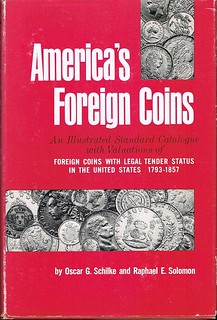 Schilke wrote America's Foreign Coins with Raphael Solomon published in 1964 by Coin and
Currency Institute. It covers coins that had a legal tender status in the United States.
Schilke wrote America's Foreign Coins with Raphael Solomon published in 1964 by Coin and
Currency Institute. It covers coins that had a legal tender status in the United States.
Schilke died following a heart attack at Lawrence Memorial Hospital in Niantic, Connecticut, on May 23, 1965, and is buried at Grove Cemetery in Naugatuck.
An editorial (James C. Risk) in Numismatic Review described the late Oscar G. Schilke, one of
the most loveable figures who has ever moved across the numismatic landscape in recent years.
Much of his collection was sold privately. I don't know who acquired his thirty pieces of silver or his 1792 half dimes.
Federal Brand Enterprises conducted an auction for the Blue Ridge Numismatic Association convention on August 5, 1965. Coins from Schilke were in the sale but not specifically identified. Parts of his collection of world coins were sold at auction by Lester Merkin in his sale of December 8, 1972.
Schilke got a good return on his investment in coins. One strategy was to buy coins from the public at the local bank at a price level where they could be resold to dealers at a profit.
In 2020 I was offered the opportunity to acquire a set of the Schilke medals issued by the Fairfield County Numismatic Association in a plastic holder. There were a hundred pieces issued in brass and are not frequently seen. Only five were struck in aluminum making it a scarce medal. Two pieces were struck in silver. The gold medal is unique.
A number of coin clubs have honored a member with a unique gold medal. They seldom appear on the market. The Schilke gold medal for the New York Numismatic Club was sold at auction by Heritage in 2016 for about $2000. It was later repatriated to the club.
CINCINNATI COLLECTOR HENRY CLAY EZEKIEL
Recently Pete Smith wrote about Henry Clay Ezekiel. Ezekiel was also the subject of an article Dave Schenkman published in the Summer 2017 issue of The Civil War Token Journal. With permission, we're republishing it here. Thanks! -Editor
David E. Schenkman
Over the years much has been written about the lives of prominent numismatists. Strangely, I have found very little concerning Henry Clay Ezekiel, who not only amassed a huge collection of tokens, medals, and paper money relating to Cincinnati, but also was acquainted with the die sinkers who were responsible for striking a significant percentage of all merchant tokens issued during the Civil War.
According to an article in the November, 1930 issue of The Numismatist, Ezekiel was born on January 30, 1846 in Richmond, Virginia. He attended the Lancasterian School in Richmond, and upon graduation enlisted in the Confederate Army. Following his discharge he moved to Cincinnati, Ohio, where he resided for the rest of his life.
Ezekiel became an auctioneer, and in all probability started this career by working for someone
else. His earliest advertisements under his own name, in 1875 issues of The Cincinnati Enquirer
newspaper, describe his business as Ezekiel & Co., Auctioneers; sales-rooms Nos. 19 and 21 W. Pearl
St.
His October 5 th sale was of dry goods, woolens, blankets shawls, notions, furnishing goods, &c.
The
following day he conducted a special importers' sale of ribbons, silks, velvets, feathers and flowers,
collarettes, ties, scarfs, genuine human hair, &c.
From that modest start, he quickly became Cincinnati's
premier auctioneer.
In 1878 Ezekiel began an association with Louis Rosin & Company, and by 1880 Samuel
Bernheim was also involved with the firm. An announcement in the January 1, 1881 newspaper
announced that the business was dissolved, and that H. C. Ezekiel and Samuel Bernheim will continue
the General Auction and Commission Business at No. 134 Main Street under the firm name of Ezekiel &
Bernheim
This was a partnership that was destined to last for more than thirty years, and with great
success.
Ezekiel & Bernheim handled such diverse items as fine art, automobiles, real estate, tobacco crops, pianos, furniture, oriental rugs, glassware and china, coins, and antiques. During their years in business they liquidated the inventories of numerous companies that were going out of business. In 1911, for example, they conducted a sale devoted completely to shoes; 75,000 pairs of them. In addition to their Main Street location, they had a warehouse on E. Second Street, and another on Walnut Street. One of the services the firm offered was the insured storage of furniture, etc. in these facilities.
Ezekiel was active in community affairs. In 1877 he was elected president of the newly-formed
Young Men's Hebrew Association, and he was a member of several other Jewish organizations. He
volunteered his services as auctioneer for the Cincinnati Symphony Orchestra's concert seats, and he
served as a director of the Ohio Mechanics' Institute. In March, 1894 he married Jesse Myers of
Avondale (a neighborhood in Cincinnati) in what was described by The Cincinnati Enquirer as the most
brilliant social event of the week.
More than fifty family members and friends were in attendance. The
new couple spent their honeymoon in Asheville, followed by a trip to New York.
An article in the June 16, 1914 issue of The Cincinnati Inquirer announced that the Cincinnati Commission Company had purchased Ezekiel & Bernheim's business, which had gone into receivership several months earlier. Two of the four principals in the new company were Walter and Lewis Ezekiel; I assume they were sons of Henry who, shortly prior to that notice, had announced his new realty agency in the Provident Bank building at Vine and Seventh streets. He remained in that business until his death in 1930.
Having read this far, perhaps you are wondering what all this has to do with Civil War tokens.
Well, Ezekiel was a very active, knowledgeable, and, as you'll see, significant collector and dealer in
numismatic items, and he was especially interested in those from Cincinnati. He was listed as a new
member of the American Numismatic Association in the September, 1905 issue of The Numismatist.
From that time on his name appeared frequently in that publication. His obituary notice in the
November, 1930 issue cites a 1911 biographical sketch in which he related that he became interested
in coins while living in Richmond and that he became acquainted with Edward Cohen, who was in the
banking and brokerage business in that city. One day while in the banker's office (about 1860) a Negro
brought into him a lot of silver coins among which he found an 1804 dollar. Mr. Cohen later sold the
dollar to his uncle, Col. M. J. Cohen, of Baltimore, for $100. This dollar became the Colonel Cohen 1804
dollar, one of the dozen or so known specimens of this date that many collectors regard as originals.
Even prior to his membership, Ezekiel was placing ads in The Numismatist. His earliest, in the
June 1904 issue, offered to buy many types of items from Cincinnati, including shinplasters, store cards,
tokens, copperheads, etc., and encased postage stamps. A full page ad in the October 1904 issue
announced that in a forthcoming sale of my collection of Paper Money of the Confederate States of
America, which I will sell at an early date in New York at Public Auction through Mr. Lyman H. Low, there
are a number of large lots of the different denominations and varieties which are in absolutely perfect
and uncirculated condition; many of the series, letters and numbers are consecutive and in precisely the
same shape as received from the Treasury at Richmond and have been in my possession since the fall of
this great stronghold of the Rebellion. I will sell the EXTREMELY RARE Jefferson Davis and General
Beauregard silver pieces, much finer and in better condition than those illustrated in the catalogue of,
and sold in the Betts sale, Bids by mail or in person by dealers and collectors are respectfully solicited.
Catalogues of this and my future sales of Coins, Medals, etc., mailed free on application.
A lengthy article in Charles Theodore Greve's Centennial History of Cincinnati and
Representative Citizens, which was published in 1904, included a article by Ezekiel titled Cincinnati
Makers of Metal Money, "Hard Times" Tokens and Shop Cards
in which he explains that in addition to
the manufacturers, or printers and engravers of paper money, there were also a number of die sinkers
and stampers of metal pieces, which passed current as money for the value of One Cent each, prior to
and during the War of the Rebellion. Among these were the following: V. R. Allen, B. C. True, John
Stanton, James M. Murdock, Murdock & Spencer, Joseph J. Sayre and others. These firms also made
sutlers' checks, used in the Union Army, milk checks, bar checks, soda water checks, street car checks
and checks, or "necessity" coins, of all kinds, payable on demand, which-passed as money in Cincinnati
for a standard of value, as stamped thereon.
Ezekiel was well acquainted with two very prolific Civil War token die sinkers, John Stanton and
James Murdock, Jr., and he was able to obtain examples of their work from directly them. Among the
items offered in his September 1905 sale was an almost complete series of Hard Times Tokens, with
many of the very rare types and varieties,
and a nearly complete series of the city of Cincinnati
Merchants' War Tokens 1862, '63, '64, from A to Z, mostly milled edges and uncirculated, as they came
from the dies of John Stanton, War Token manufacturer of Cincinnati.
A fascinating article of interest to collectors was published in the June 4, 1911 edition of The
Cincinnati Inquirer. Ezekiel had come to the attention of the reporter because he had run a classified
advertisement offering to buy numismatic items from Cincinnati. Concerning the Civil War tokens that
circulated in Cincinnati, Ezekiel noted that John Stanton, a die sinker and engraver of Cincinnati, made
during the war of the rebellion, 1861-5 more ‘Copperheads,' ‘War Tokens,' ‘Store Cards.' and other
metal tokens or checks which passed current as money for the value of ‘one cent,' and for higher values
in exchange for merchandise, milk, bread, coal, drayage, &c., than any other die sinker or engraver in
the United States. Mr. Stanton is still living at the age of 82, and I am personally acquainted with him. He
was born in Orange County, New York on March 9, 1829, and is now in the metal novelty business.
He made the first ones of these War Tokens with the Liberty head and date underneath in
1862, and continued making them in 1863 and 1864 until the close of the war, at about which time the
United States Government issued fractional currency, and this put an end to the manufacture of these
little metal coins or ‘necessity money,' which were issued by many merchants throughout the United
States.
It was early in the war of the rebellion when Mr. Stanton conceived the idea of making these
War Tokens which passed for one cent. While at Lafayette, Ind. he saw for the first time one of the
patriotic war tokens of the size of a small cent, which gave him the ides that these things might do as
business cards, and at the same time issued for the value of one cent. He came back to Cincinnati and
proposed the same to a number of Cincinnati merchants, and secured orders for very large quantities.
He made these tokens for several hundred firms in Cincinnati, and at this time does not recollect how
many firms he supplied, but from the number that are known of by collectors they run into the
hundreds……
These little copper War Tokens, Copperheads or Store Cards passed readily as money in value
of one cent from hand to hand, and no questions were ever asked in respect to them. They were quite
convenient for making change, and no one questioned that the firms or individuals who issued them
would redeem them promptly, which, of course, was done, excepting where they were gathered up by
collectors and are still held by them.
Mr. Stanton also made quite a number of Sutlers' Checks for most all of the Western regiments
that went into the war. He also made, about 1861, the well-known ‘Wealth of the South' series, of which
he sold a great many, not only in the North, but in the South, and they were used as tokens, also as
badges at the time they were made. He got up a circular describing them and sent the same to all the
papers throughout the South at the beginning of the war. They advertised them very extensively and
large numbers of them were sold by him. There was considerable Confederate sentiment in and about
Cincinnati, where large quantities were disposed of, and they were worn as badges by Southern
sympathizers.
As I mentioned earlier, Ezekiel was acquainted with Stanton and Murdock. An ad in the
November 1917 issue of The Numismatist announced that a remarkable collection of Civil War tokens
would be sold.
Known as the J. Murdock, Jr., Collection,
it was described as comprised of specimens
made by John Stanton and J. Murdock, Jr., Cincinnati die-cutters, from 1862 to 1864. This collection is
believed to have been held intact since the war until recently, when it was purchased by Mr. Henry C.
Ezekiel of Cincinnati. Mr. Ezekiel has a wonderful collection of Cincinnati War Tokens, and in order to
make it more complete if possible, he purchased the Murdock collection as a whole - the only way it
could be purchased. Strange to say, he was able to add to his former collection only a very few pieces.
He has now decided to dispose of the Murdock collection except for the few pieces he retains, and they
will be offered at auction in the East shortly. Practically all the specimens are in uncirculated condition,
bright, and many proofs.
Ezekiel's collection wasn't limited to tokens and obsolete currency. It was described as being
the most extensive in all branches of numismatics. He has also a large collection of autographs, stamps,
historical and literary curiosities, possibly the most extensive of any private collector in the United
States.
Art was another of Ezekiel's passions, and in 1924 his private Collection of Pictures and
Sculptures
was sold by the Traxel Art Gallery in Cincinnati. He would have been a fascinating person to
know!
For more information about the Civil War Token Society, see:
http://cwtsociety.com/
To read the earlier E-Sylum article, see:
HENRY CLAY EZEKIEL (1846-1930)
(https://www.coinbooks.org/v27/esylum_v27n14a15.html)
SBG ACQUIRES WORLD BANKNOTE AUCTIONS
Stack's Bowers Galleries has acquired World Banknote Auctions and brought founder Dennis Hengeveld on board. Congratulations to all. Here's the announcement. We'll look forward to Dennis's continued writing and cataloging of great numismatic material. -Editor
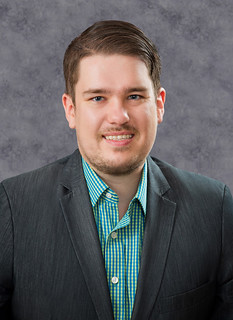 Stack's Bowers Galleries, a global leader in numismatic auctions, proudly announces its
acquisition of substantially all the assets of World Banknote Auctions. This strategic move sees the integration of
World Banknote Auctions founder Dennis Hengeveld, a renowned authority in rare paper money and world coins,
into Stack's Bowers Galleries' distinguished team of specialists.
Stack's Bowers Galleries, a global leader in numismatic auctions, proudly announces its
acquisition of substantially all the assets of World Banknote Auctions. This strategic move sees the integration of
World Banknote Auctions founder Dennis Hengeveld, a renowned authority in rare paper money and world coins,
into Stack's Bowers Galleries' distinguished team of specialists.
Under the leadership of Dennis Hengeveld, World Banknote Auctions has achieved remarkable growth, with total
auction prices realized surpassing $7 million in 2023,
said Brian Kendrella, President of Stack's Bowers Galleries.
The acquisition of World Banknote Auctions and the addition of Dennis to our team underscores our dedication to
the rare paper money category. Not only does it expand our offerings of rare notes for auction, but it also brings
aboard one of the foremost paper money authorities and numismatic entrepreneurs, enhancing our roster of
prominent experts.
I am thrilled to unite with Stack's Bowers Galleries and lend my expertise in banknote collecting to their esteemed
brand,
said Dennis Hengeveld, President at World Banknote Auctions. Together, we will continue to provide
collectors with access to the finest paper money from around the globe, while upholding the high standards of
integrity and professionalism for which Stack's Bowers Galleries is renowned.
In just the past three years, our banknote offerings have nearly tripled,
said Aris Maragoudakis, the firm's Director
of World Currency. With the addition of Dennis and World Banknote Auctions, I anticipate our rapid growth to
persist, offering collectors expanded access to rare currency and expertise, and further cementing our position as the
premier auction house for high-end material.
All current consignments to World Banknote Auctions will be offered in future Stack's Bowers Galleries auctions.
Mr. Hengeveld will operate from Stack's Bowers Galleries' new Sacramento, California offices and can be contacted at Dennis@StacksBowers.com. This acquisition follows the recent announcement of the sale of the L. E. Bruun Collection by Stack's Bowers Galleries, featuring a significant Scandinavian banknote collection and one of the most remarkable world coin collections that exists today. Additionally, the banknote department will be showcasing collections from Eric Agnew, Al Kugel, John E. Sandrock and others later in 2024.
For information regarding Stack's Bowers Galleries auctions or to learn more about consigning to an upcoming sale contact the firm at 800-458-4646 or Info@StacksBowers.com.
DONIVAN FLOYD WINS 2024 PNG SCHOLARSHIP
PNG has announced the winner of their 2024 PNG Scholarship. -Editor
 A young numismatist from Coeur D' Alene, Idaho, Donivan Floyd, 19, is the winner of the 2024 Professional Numismatists Guild's (www.PNGdealers.org) annual scholarship award competition.
A young numismatist from Coeur D' Alene, Idaho, Donivan Floyd, 19, is the winner of the 2024 Professional Numismatists Guild's (www.PNGdealers.org) annual scholarship award competition.
The PNG scholarship will cover airfare, tuition for one of the two June 2024 American Numismatic Association (www.money.org) Summer Seminar sessions, meals, and dormitory accommodations on the campus of Colorado College, adjacent to the ANA headquarters, said PNG Executive Director John Feigenbaum.
Floyd grew up in a coin shop, DJ's Coins & Collectables owned by his father David J. Floyd, but only began collecting five years ago at the age of 14.
I wanted a job at my dad's shop. I never thought I would like coins and never had too much interest in it, but once I learned more about the field then I really started to grow passionate about grading and modern coins! My favorite coins are Jefferson nickels,
he explained.
Aside from gaining knowledge of numismatics from his father and others, Floyd is a participant in the PNG's nextGen Mentorship program to assist young and future dealers. He has been mentored by PNG Board of Directors member James Sego of JMS Coins (www.JMScoins.com), also of Coeur D' Alene, Idaho.
Floyd launched his own online coin business three years ago, Modern Coin King.
I hope to further grow my knowledge on U.S coins and grading, running my business, and to become a useful asset and leader in numismatics,
Floyd stated in his essay submitted as part of the PNG scholarship competition.
I hope to make great connections and friendships, learn valuable knowledge for my business, and further expand my perception of this field. There is so much that I do not know, and would love to gain insight that lasts a lifetime,
wrote Floyd.
The mission of the PNG's nextGen Mentorship program is to guide youth to success in the numismatic industry by connecting interested young adults with mentors, and using PNG's respected influence to build relationships with numismatic organizations, worldwide,
said PNG Executive Director John Feigenbaum.
We are delighted that Donivan Floyd is gaining valuable insight and knowledge about the hobby and business, and is following the core values of PNG and our high standards for reputation, integrity, and responsibility,
stated Feigenbaum.
The PNG is a nonprofit organization composed of many of the top rare coin and paper money dealers in the United States and four other countries. PNG member-dealers must adhere to a strict Code of Ethics in the buying and selling of numismatic merchandise.
For additional information about PNG or the young numismatists scholarship program, visit online at www.PNGdealers.org or call (951) 587-8300, and for information about the PNG's nexGen Mentorship program, visit https://www.pngdealers.org/png-nexgen.
For information about the annual ANA Summer Seminar, visit www.money.org/summer-seminar.
NUMISMAGRAM MEDAL SELECTIONS: APRIL 21, 2024
Numismagram's Jeremy Bostwick sent along these four items from his most recent upload of new material to his site. This upload featured a complete run of Jacques Wiener's initial architectural series of Belgian churches, along with a few other architectural types. For all of the new items, please visit https://www.numismagram.com/inventory.
From what is today eastern Netherlands and western Germany, the Wieners were a Jewish family of exceptional medalists, especially known for numerous numismatic works throughout the Kingdom of Belgium. Eldest brother Jacques, along with younger brothers Leopold and Charles, created some of the finest works of medallic art of the 19th century, and all are particularly noted for their highly detailed and intricate work, especially that of Jacques with respect to architectural renderings -Editor
102781 | BELGIUM. Bruges. Cathedral of St. Sauveur bronze Medal. Issued 1846. Churches of Belgium series (50mm, 53.6 g, 12h). By J. Wiener and struck at the Geerts mint in Ixelles. FONDÉE PAR ST. ELOI ÉVÊQUE DE NOYON 652 INCENDIÉE AU DOUZIÈME SIECLE / REBATIE ET CONSACRÉE 1127. UNE SECONDE FOIS INCENDIÉE 1358. LA TOUR RECONSTRUITE 1846. / RENFERME LES RESTES DE CHARLES LE BON / ÉGLISE ST. SAUVEUR / À BRUGES, perspective exterior view of the cathedral // Perspective interior view, from a vantage point just left of center. Edge: Plain. Ross M22; van Hoydonck 20; Reinecke 3. Gem Mint State, rich red-brown surfaces, with some lustrous brilliance remaining. $365.
To read the complete item description, see:
102781 | BELGIUM. Bruges. Cathedral of St. Sauveur bronze Medal.
(https://www.numismagram.com/product-page/102781)
102777 | BELGIUM. Tongeren. Notre-Dame Basilica bronze Medal. Issued 1846. Churches of Belgium series (50mm, 53.90 g, 12h). By J. Wiener and struck at the Geerts mint in Ixelles. FONDÉE PAR ST MATERNE, AGRANDIE PAR ST SERVAIS, DÉVASTÉE PAR LES HUNS, / RÉTABLIE PAR LE DUC OGER SOUS CHARLEMAGNE 799, CONSACRÉE PAR LÉON III LE 9 MAI 804, / RECONSTRUITE 1240, RESTAURÉE 1848 / ÉGLISE NOTRE DAME / À TONGRES, perspective exterior view of the basilica // Perspective interior view, from a vantage point right down the center. Edge: Plain. Ross M17; van Hoydonck 16; Reinecke 14. Choice Mint State. Rich red-brown surfaces, with some lustrous brilliance remaining. $325.
To read the complete item description, see:
102777 | BELGIUM. Tongeren. Notre-Dame Basilica bronze Medal.
(https://www.numismagram.com/product-page/102777)
102779 | BELGIUM. Tournai. Notre-Dame Cathedral bronze Medal. Issued 1846. Churches of Belgium series (50mm, 52.27 g, 12h). By J. Wiener and struck at the Geerts mint in Ixelles. FONDÉE PAR ST PIAT VERS 295, RAVAGÉE PAR LES VANDALES, RECONSTST À L'ÉPOQUE MÉROVINGIENNE / LE CHOEUR OGIVAL ÉLEVÉ 1110, VOÛTÉ PAR L'ÉVE ÉTIENNE 1198, TERMÉE PAR WALTER DE MARVIS 1242 / LA 1RE PIERRE DE LA RESTAUR: INTÉRRE POSÉE 1840, DE LA RESION EXTÉRRE 1841 / ÉGLISE CATHÉDRALE / À TOURNAY, perspective exterior view of the cathedral // Perspective interior view, from a vantage point just right of center. Edge: Plain. Ross M23; van Hoydonck 21; Reinecke 17. Gem Mint State. Rich red-brown surfaces, with some lustrous brilliance remaining. $365.
To read the complete item description, see:
102779 | BELGIUM. Tournai. Notre-Dame Cathedral bronze Medal.
(https://www.numismagram.com/product-page/102779)
102782 | BELGIUM. Ypres. Church of St. Martin bronze Medal. Issued 1847. Churches of Belgium series (50mm, 52.40 g, 12h). By J. Wiener and struck at the Geerts mint in Ixelles. ÉGLISE ST MARTIN À YPRES / CONSTRUITE 1083, REBATIE 1221–1270 / LA TOUR 1434, / LA RESTAURATION GÉNÉRLE / COMMENCÉE 1845, perspective exterior view of the church // Perspective interior view, from a vantage point left of center. Edge: Plain. Ross M32; van Hoydonck 29; Reinecke 19. Gem Mint State. Rich brown surfaces, with some lustrous brilliance remaining. $365.
To read the complete item description, see:
102782 | BELGIUM. Ypres. Church of St. Martin bronze Medal.
(https://www.numismagram.com/product-page/102782)
WAYNE'S NUMISMATIC DIARY: APRIL 21, 2024
 On Tuesday April 16, 2024 I hurried out of the office to head toward Alexandria for the monthly dinner meeting of my Northern Virginia Numismatic Social group, Nummis Nova. Our special guests for the evening were my old friend and E-Sylum contributor Kavan Ratnatunga and his wife Lidwina. They'd travelled to the U.S. from Sri Lanka to view the total eclipse in Dallas, and were now in the Washington, D.C. area visiting friends. They had been touristing in D.C. for a couple of days when I picked them up outside the Alexandria Old Town Metro Station.
On Tuesday April 16, 2024 I hurried out of the office to head toward Alexandria for the monthly dinner meeting of my Northern Virginia Numismatic Social group, Nummis Nova. Our special guests for the evening were my old friend and E-Sylum contributor Kavan Ratnatunga and his wife Lidwina. They'd travelled to the U.S. from Sri Lanka to view the total eclipse in Dallas, and were now in the Washington, D.C. area visiting friends. They had been touristing in D.C. for a couple of days when I picked them up outside the Alexandria Old Town Metro Station.
It was great to see Kavan again over thirty years since we'd met at meetings of the Pittsburgh Numismatic Society on the campus of the University of Pittsburgh. Kavan was an astrophysicist at nearby Carnegie Mellon University, working with data from the Hubble Space Telescope. Traveling the globe to experience a celestial phenomena is perfectly in character. Here's the photo he posted on Facebook of the Total Solar Eclipse on 2024 April 8th, taken from south west of Dallas, TX.
Robert Hoppensteadt was our host at 815 Southside, one of our regular haunts. We arrived and took seats near Tom Kays and Mike Packard. Before long Julian Leidman sat next to me. Other attendees included Eric Schena, Dave Schenkman, Mike Markowitz, Jon Radel, and Lorne LaVertu. Tom Kays took a nice group photo - here's his writeup.
Tom's April 2024 Nummis Nova Dinner Notes
These two most southern of attendees were Wayne's honored guests. Dr. Kavan Ratnatunga and his wife travelled all the way from Sri Lanka (formerly Ceylon) off the southern tip of India to see the total eclipse of the sun in the U.S. last week. Kavan was a regular attendee of the Pittsburgh Numismatic Society when working for Carnegie Mellon University; he helped engineer and repair the Hubble Space Telescope, and maintains a website featuring over 1400 ancient, legally circulated, colonial and modern coins of Sri Lanka in the Lakdiva Coin Collection seen at https://lakdiva.org.lk.
Ceylon (Sri Lanka) traded in coins since ancient times starting in the third century BCE, when Indo-Roman bronzes circulated alongside local, punch-marked coins. Later Indian influence and Lakdiva sovereignty in the seventh century brought a wide variety of monies of account by medieval times. They experienced a Portuguese colonial period in the early 1500s and then a Dutch occupation in the 1670s, leading to long distance administration from the Batavian Republic in the 1700s. Portuguese vessels and then Dutch East Indiamen regularly bound to and from Ceylon for tea would sail around the tip of India, sometimes encountering typhoons and lee shores, only to spill their cargos and coin treasures at unexpected places. The science fiction writer Arthur C. Clarke moved to Sri Lanka in 1956 to take advantage of year-round scuba diving and in 1961 helped discover a shipwreck treasure of thousands of 1701-dated silver rupees. Kavan spoke about this treasure, legal treasure trove laws and questionable practices to export and sell portions of the treasure to Donald Trump for his Taj Mahal Casino.
Sri Lanka has imposed strict export bans on archeological artifacts and coins that are one
hundred years old or more, which makes collecting coins from Sri Lanka subject too much red
tape
regarding declarations, chain of ownership, and proven provenance.
We note again that Nummis Nova dinners bring a wide berth of numismatic curiosities to discuss from anywhere and ‘any when' that coins and currency circulated. Seen at table were:
- A silver, 1826 Erie Canal Completion Medal (HK-1000) in PCGS Specimen Proof 63;
- A 1901-dated, bronze medal of William McKinley from Anaconda Hill, Silver Bow Co., Butte, Montana in NGC MS-63, designed by Tiffany & Co., formerly from the John J. Ford Jr., Collection;
- A fine and scarce bronze from Coele-Syria showing the bust of Otacilia Severa proclaimed Augusta from 244 – 249 AD with the Heliopolis (City of the Sun) temple on the reverse;
- Another fine bronze with city view of Moesia Inferior, Marcianopolis under Gordian III from 238 – 244AD;
- A gold Tremissis of Constans II from Ravenna in the Byzantine Empire from 641 – 668 AD;
- A deep-framed wooden case of assorted old silver coins big and bright enough to be seen under ambient lighting in a fine restaurant including Ecus and Demi-Ecus, Crowns and Half Crowns, Dollars and Half Dollars, Pieces-of-eight and Four Reales, with Siege Pieces and Proclamation Medals dating from 1598 to 1846;
- An 1855 Prussian One Thaler Note with fine obverse and reverse Medal cartouches;
- An 1861 Prussian Treasury Bill with motto Gott Mit Uns with coat of arms for Ein Thaler Courant in nice shape;
- A scarce, 1841 Farmers Bank of Virginia (Lynchburg Branch) Thirty Dollar Note;
- A French, Siege of Lyon, Fifty Sous note with paper seal of fasces and cannons;
-
A token
Good for one vote against the fee system
by Citizen's Party Candidate W. F. Robertson, for Commissioner of Revenue from Norfolk, Virgina; - A die for One Dollar tokens redeemable at the New River and Pocahontas Stores (Not Transferable)
- Both an 1859 and an 1864, Augustus B. Sage, Catalogue of Coins, Medals, and Tokens including rare books, autographs, and pattern pieces on exhibition at D.F. McGilray & Co., Tremont Street in Boston;
- A Price List of United States Fractional Currency (All clean and new) First through Fifth Issues, (offered at from two to four times face value) as well as Colonial and Continental Notes and Confederate Notes, etc.;
- Tony Carlotto's book, The Copper Coins of Vermont, and those bearing the Vermont Name issued by C4 in 1998;
- A. Delmonte's multilingual book, The Silver Benelux – Crowns, Half Crowns, Quarter Crowns, and Siege Pieces struck in the Territories of the former Northern and Southern Netherlands, 1967.
Best of all, our dinners were so super-sized that many of us have grand, leftover lunches to reheat the next day, at least those of us wise enough not to try and eat an entire southern entree in one sitting after those sweet potato biscuit appetizers with apple butter and peach-pepper chutney.
More Photos
Thanks, Tom! Here are some of my photos from the evening.
I don't know when we'll ever have members or guests who travelled so far for a meeting!
Books and Other Publications
Kavan kindly gifted me a copy of his book on Sri Lanka banknotes, and Mike Markowitz gave me a printed copy of his new review for CoinWeek of the new 3rd edition of the 100 Greatest Ancient Coins.
Wayne's Ephemera
As E-Sylum readers know, I recently consigned the bulk of my numismatic library to Kolbe & Fanning. But old habits die hard, and I couldn't resist the opportunity to start again with some interesting numismatic ephemera. Here's what I brought to the meeting, most of which had never graced my ephemera collection before.
Robert's Ancients
Robert Hoppensteadt writes:
"I brought two coins, these are CNG photos and descriptions, I had won both pieces at auction 12 years or so ago."
SYRIA, Coele-Syria. Heliopolis. Otacilia Severa. Augusta, AD 244-249. Æ (28mm, 20.77 g, 7h). Draped bust right, wearing stephane, set on crescent / Temple of Jupiter Optimus Maximus Heliopolitanus viewed in perspective; grain ear to right. (CNG feature auction 90 lot 1114)
MOESIA INFERIOR, Marcianopolis. Gordian III. AD 238-244. Æ Pentassarion (27mm, 11.82 g, 12h). Menophilus, legatus consularis. Laureate and draped bust of Gordian III right vis-à-vis draped bust of Serapis left, wearing calathus / City-view seen from aerial perspective: city wall of thirteen towers, two of which flank arched gate; arched colonnade along interior of back wall; inside, temple precinct composed of tetrastyle temple façade with colonnaded wings on either side and lighted altar in precinct center. (CNG feature auction 88 lot 701)
I never got around to collecting these myself, but I've always enjoyed ancient coins illustrating buildings. Thanks.
Eric's Banknotes
Eric Schena brought some great world banknotes and provided these images. Thanks.
After dinner Julian was able to drive Kavan and Lidwina to where they're staying in Silver Spring, MD. When I called Kavan the next afternoon he was standing in Julian's shop talking coins.
An outstanding night of world-spanning numisamtic fellowship. Safe travels to all.
DORSET ENGLISH CIVIL WAR COIN HOARD
Not all coin hoards are from ancient Rome. Here's a BBC story about a find of a hoard deposited early in the English Civil War. -Editor
The cache of more than 1,000 gold and silver coins was discovered under an earth floor at South Poorton, Dorset.
One of the property's new owners, Robert Fooks, was digging with a pickaxe by torchlight when he found the trove in a pottery bowl.
Auctioneers hope to sell the collection for between £15,000 and £30,000.
Mrs Fooks said it was only the following day that she examined the coins and realised how old they were.
"You can clearly see the date. Some of the gold coins were easy to read, really clean," she said.
The hoard, discovered in October 2019, was returned to the couple this year after expert analysis and legal work.
The British Museum guessed they were deposited early in the English Civil War (1642-51) by a landowner trying to keep his wealth safe.
The collection, including James I and Charles I gold coins and Elizabeth I silver shillings, is being sold by Duke's Auctions in Dorchester on Tuesday.
To read the complete article, see:
Historical coin hoard found buried under Dorset cottage
(https://www.bbc.com/news/uk-england-dorset-68848975)
COLLECTING COINS FROM TRASH
Paul Horner passed along this Wall Street Journal article about how waste processing companies recover millions of dollars worth of coins from trash. Thanks also to Justin Perrault, Dave Perkins and Len Augsburger. Great story. When you look in enough old couch cushions, the finds add up. -Editor
 At a waste-management facility in Morrisville, Pa., workers load incinerated trash into industrial machinery that separates and sorts metals, then sends them to get hosed down. The reward: buckets of quarters, dimes, nickels and pennies.
At a waste-management facility in Morrisville, Pa., workers load incinerated trash into industrial machinery that separates and sorts metals, then sends them to get hosed down. The reward: buckets of quarters, dimes, nickels and pennies.
Americans toss as much as $68 million worth of change each year, according to Reworld. The sustainable-waste processing company is on a treasure-hunt to find it. The company says that in the seven years since it started th
Coins are as good as junk for many Americans. Buses, laundromats, toll booths and parking meters now take credit and debit cards and mobile payments. Using any form of physical currency has become more of an annoyance, but change is often more trouble than it is worth to carry around. The U.S. quarter had roughly the buying power in 1980 that a dollar has today.
If you lost a $100 bill you'd look for it. If you lost a $20 bill you'd look for it. If you lost a book you'd look for it,
said Robert Whaples, an economics professor at Wake Forest University. But a penny, you're just not going to look for it.
At airport checkpoints, the Transportation Security Administration collects hundreds of thousands of dollars worth of them each year. Coins are left in couch cushions or cars, then sucked into vacuums and sent to landfills, said Dominic Rossi, Reworld's director of finance and business support.
Reworld started collecting change in 2017 after noticing more of it in the trash. The company recovers 550,000 tons of metals annually, including soda cans, old pipes, keys and silverware.
On a recent Monday, a bucket loader lifted trash from its waste facilities into various sorting machines. A rattling gray one separated out anything that was the color of a coin. Another one separated anything round and flat, like a coin. And another machine separated heavier metals like coins from lighter metals like aluminum.
It took 35 minutes to clean what the machines spat out. Then, squeaky clean coins were spread out on an iron rack to dry. They were still mixed in with euro cents, coins from Kuwait and D.C. metro tokens.
In a trailer, human checkers wearing gloves sorted through buckets of this material, separating the good coins from everything else.
Reworld gathers anywhere from $500,000 to $1 million in coins a year, which it turns over to a third party to count and deposit to local banks.
To read the complete article, see:
Americans Throw Away Up to $68 Million in Coins a Year. Here Is Where It All Ends Up.
(https://www.wsj.com/finance/americans-throwing-away-coins-28ca794c)
PAVING A FLOOR WITH COINS
The Wall Street Journal article about recovering coins from trash included a sidebar piece on using coins to pave a floor. -Editor
This year, Sara and Justin Ilse finished building a floor for their home's 230-square-foot entryway out of 65,507 pennies.
It was a way to encase something that doesn't get viewed with much value in daily life,
Justin said.
More than 20,000 of the pennies came from jars that Sara's father and brother-in-law kept in their closets. They bought the rest of the pennies they needed in 2,500 increments through their local bank. In addition to the $655 they spent on pennies, they also spent $1,195 on supplies such as glue and epoxy.
In one social-media video where they posted about the yearlong process of building the floor, they tossed a handful of pennies onto the finished product and watched them practically vanish.
And a thousand years after the Zombie apocalypse, archeologists uncovered the priceless ancient mosaic... -Editor
To read the complete article, see:
Americans Throw Away Up to $68 Million in Coins a Year. Here Is Where It All Ends Up.
(https://www.wsj.com/finance/americans-throwing-away-coins-28ca794c)
To read earlier E-Sylum articles, see:
THE STANDARD GRILL'S FLOOR OF PENNIES
(https://www.coinbooks.org/esylum_v12n28a24.html)
SANTA BARBARA LUCKY PENNY RESTAURANT HAS WALL OF COINS
(https://www.coinbooks.org/esylum_v16n39a24.html)
BATHROOM FLOOR TILED WITH PENNIES
(https://www.coinbooks.org/v23/esylum_v23n02a30.html)
COPPER HALL OF OSHKOSH, WISCONSIN
(https://www.coinbooks.org/v23/esylum_v23n17a25.html)
GOLD, SILVER, AND THE ELUSIVE GOLD STANDARD
Pablo Hoffman passed along this Delancey Place blog article with an excerpt from The Money Kings by Daniel Schulman. Thanks. -Editor
The United States had operated on the bimetallic standard prior to the Civil War, when the cash-strapped Lincoln administration began printing greenbacks. But when Ulysses Grant signed the Coinage Act of 1873, drastically limiting the minting of silver-based currency, he had placed the nation on the path to adopting the gold standard alone, as many European nations had already done and as others would do in the years to follow.

Decried as the ‘Crime of '73' by its detractors, the law touched off decades of acrimonious political debate, pitting the East Coast financial establishment, whose constituents argued for ‘sound money' backed by gold, against midwestern farmers and the citizens of western mining outposts, who pushed for a vast expansion of silver-based currency. Ballooning the money supply was attractive to debtors struggling to repay their loans, and farmers hoped it would increase the price of their crops; for the miners of Montana and Nevada, where the Comstock Lode had been discovered in 1859, it would almost literally give them the ability to mint money.
But bankers such as Seligman warned that unilaterally returning to bimetallism could have disastrous economic results, crippling international trade and causing precious gold to flee across the Atlantic while Europe dumped its silver on the U.S. Treasury. ‘A standard different from that of the commercial world would affect the vast mass of our imports and exports,' Jesse cautioned in an essay published in The North American Review, ‘and but little less directly every other industry touching these at any point.' One possible solution to America's monetary impasse was convincing key European trading partners—such as Britain, France, and Germany—to adopt international bimetallism and establish a commonly accepted ratio between gold and silver. Seligman's mission was to gauge European attitudes and pave the way for an international conference where the silver question might finally be settled.
To read the complete article, see:
GOLD, SILVER, AND THE ELUSIVE GOLD STANDARD -- 4/8/24
(https://www.delanceyplace.com/view-archives.php?p=5039)
NEPAL CROP MAKES JAPANESE BANKNOTE PAPER
Pablo Hoffman also passed along this article about the making of paper for Japanese banknotes. Thanks - interesting. -Editor
Nepal's unique ecological diversity and topography gives the country many cash crops, but there is one crop that is actually turned into cash.
In recent years, there has been a dramatic rise in exports of the bark of a Himalayan bush, Edgeworthia gardneri, prized in Japan to print currency notes, passports, envelopes, postage stamps, and other stationery.
Argeli is the only export from our region,
explains Lhakpa Sherpa, a paper bush farmer in Dolakha. It has brought in over Rs2 million income into our municipality.
According to Narayan Manandhar's Plants and People of Nepal, techniques to make paper by hand are believed to have been introduced to Nepal in the 14th century from China. The Tamang community in Rasuwa and Dolakha have used the bark of the Lokta plant, the more famous wildcrafted, handmade paper indigenous to Nepal, for at least 700 years.
Nepal began exporting the paper bush to Japan over a decade ago and it has already served as a replacement for Mitsumata which was traditionally used to make Japanese paper. "While Japanese paper is considered the best in the world," says Kiran Kumar Dangol of Nepal Handmade Paper Association, "Nepali paper is seen as stronger and better quality than most paper abroad, which has led to its high demand."
The bushes are harvested five years after being planted, usually from October to February, during which time it has a distinct white colour. High water-content Argeli is greenish in colour and is not considered suitable or of good quality.
The inner fibrous cover of the stem is used to make paper and the outer bark to make ropes, while some places also use its roots to cure scabies.
Right now, all work is done by hand, which takes a lot of effort.," he says. "We need to mechanise the planting and harvesting to make it systematic and economically viable."
To read the complete article, see:
Japanese Yen, Made in Nepal
(https://nepalitimes.com/banner/japanese-yen-made-in-nepal)
Laurence Edwards passed along a more recent New York Times article on the topic. -Editor
To read the complete article, see:
On Himalayan Hillsides Grows Japan's Cold, Hard Cash
(https://www.nytimes.com/2024/04/15/world/asia/nepal-japan-yen-argeli.html)
ZIMBABWE GOLD NOTES INTRODUCED
In the here-we-go-again department, Zimbabwe is issuing yet another new version of its' inflated currency. -Editor
Zimbabwe's recently introduced gold-backed currency is sliding on the local black market but officials insist the currency is getting stronger and has a bright future. Columbus Mavhunga reports from Harare.
Even songs are played on the radio encouraging citizens to embrace the currency, called Zimbabwe Gold — or ZiG — introduced on April 5 trading at 13.56 to the U.S. dollar.
Official statistics say ZiG is now trading at 13.41. But on the black market it is around 20.
Bond notes refer to the currency which was launched in 2019 after a decade of Zimbabwe using the U.S. dollar and other currencies. The bond note had lost about 80% of its value and was trading at around 40,000 to the dollar before its official demise.
The government says for now, commodities like fuel will still be bought and sold using U.S. dollars.
Gift Mugano, an economics professor, predicts the new currency will go the way of the abandoned one.
To read the complete article, see:
Zimbabwe's new gold-backed currency sliding on black market
(https://www.voanews.com/a/zimbabwe-new-gold-backed-currency-sliding-on-black-market/7572007.html)
Aidan Work passed along a .pdf illustrating security features of the new ZiG notes. Thanks. -Editor
Aidan adds:
"Zimbabwe's ZiG currency will actually be released on 30 April.
"There will be coins of 1/4 & 1/2 ZiG as well as the banknotes."
To read the complete article, see:
INTRODUCING THE NEW
1ZiG AND 2ZiG BANKNOTES
For Your Convenience
(https://www.rbz.co.zw/documents/press/2024/April/ZiG_Posters.pdf)
SINGAPORE STARTUP'S PHYSICAL BITCOIN BANKNOTES
Physical bitcoins have been around for some time and are now collectibles. Physical bitcoin banknotes are less common. Time will tell if any of them catch on. Before anyone notices, let me note upfront that this news is a few years old - it just popped up for some reason in a Google alert. The company still exists and their website is active, with a new blog article posted just this week. -Editor
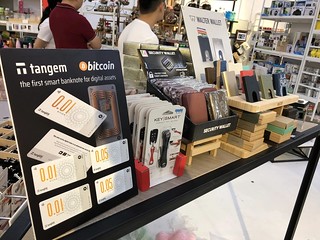 A Singaporean startup developing ‘smart banknotes' for cryptocurrencies has launched sales of physical bitcoin banknotes with a pilot in a major Singaporean mall.
A Singaporean startup developing ‘smart banknotes' for cryptocurrencies has launched sales of physical bitcoin banknotes with a pilot in a major Singaporean mall.
Describing itself as a ‘smart banknote platform' that manufactures physical notes with denominated values of cryptocurrencies like bitcoin, Singaporean firm Tangem has debuted ‘Tangem Note(s)' in a pilot launch at the Suntech City shopping center in the city-state today.
The ‘banknotes' will carry their value in bitcoin on a chip inside each note and are available in denominations of 0.01 BTC ($98) and 0.05 BTC ($485) at launch.
The hardware inside each banknote – it isn't made of paper – is a Samsung Semiconductor S3D350A chip which, according to Tangem co-founder Andrew Pantyukhin says, ‘addresses all known attack vectors on hardware and software levels on a Medium post. The accompanying cold wallet is uncopiable
, Tangem says, while its co-founder insists the hacking of a single banknote would prove ‘uneconomical' and would only be restricted to a single banknote even in the event of a hack.
Each banknote costs the company $2 to manufacture. The co-founder says the company is ‘making millions of units now' in a bid to facilitate crypto transactions that are immediate, free and anonymous
.
Pertinently, transferring ownership of the notes and their value in bitcoin is instant when the banknote swaps hands. Physically hand over the whole wallet together with the blockchain private key. No transaction fees, no need to await confirmation blockchain,
Tangem states on its website, adding that each note will be NFC-enabled, allowing a user to instantly verify the validity of the assets contained via a smartphone.
These look more like chip cards than banknotes. Has anyone encountered them? -Editor
To read the complete article, see:
Physical Bitcoin Banknotes Launched in Singapore to Drive Adoption
(https://uk.movies.yahoo.com/movies/physical-bitcoin-banknotes-launched-singapore-140230555.html)
To visit the company website, see:
https://tangem.com/
To read earlier E-Sylum articles, see:
BITCOIN BANKNOTES
(https://www.coinbooks.org/v24/esylum_v24n11a32.html)
HYBRID CRYPTO-BANKNOTES PROPOSED
(https://www.coinbooks.org/v24/esylum_v24n20a33.html)
TOM BADLEY'S BITCOIN BANKNOTES
(https://www.coinbooks.org/v26/esylum_v26n51a30.html)
THE HISTORY AND FUTURE OF THE CFA FRANC
Pablo Hoffman passed along this article with background on the CFA franc, a common currency in 14 African countries, created in 1945. -Editor
The CFA franc zone was founded by then colonial power France after the second world war. Its aim was to ensure a continuously cheap influx of resources into France.
The zone is divided into two. The west African CFA franc zone has eight members: Mali, Niger, Burkina Faso, Senegal, Côte d'Ivoire, Benin, Togo and Guinea-Bissau. The central African zone has six: Cameroon, Gabon, Republic of Congo, Central African Republic, Chad and Equatorial Guinea.
Popular mobilisation against the currency has been intense in recent years in west Africa.
This led to cosmetic changes to the currency arrangements. For example in 2019, French president Emmanuel Macron and the sitting president of Côte d'Ivoire, Alassane Ouattara, announced the withdrawal of French staff from some of the regional central bank's decision-making bodies. They also waived the requirement – much maligned on the continent – to store 50% of all reserves in Paris as a guarantee to the former colonial power that they wouldn't be wasted on irresponsible fiscal expansion.
Overall, however, the CFA franc has remained more or less the same and France has not been willing to leave the arrangement of its own accord. The old colonial attachment and supposed developmental benevolence has carried the day.
But the conditions for major change are in place. The Alliance of Sahel States between the junta-led governments of Mali, Burkina Faso and Niger has stated its intention to introduce the Sahel
as a new regional currency. Whether this initiative – and the Senegalese plan for a national currency – will amount to a full break-up of the CFA franc zone and its terminal decline will depend on how well they plan and execute the transition to several new currencies or a new one without any French involvement.
Historically, as shown by Fanny Pigeaud and Ndongo Sylla in their book Africa's Last Colonial Currency: The CFA Franc Story, serious attempts at leaving the CFA franc since its inception in 1948 have been sabotaged by France.
To read the complete article, see:
CFA franc: conditions are ripe for replacement of the west African currency rooted in colonialism – expert
(https://theconversation.com/cfa-franc-conditions-are-ripe-for-replacement-of-the-west-african-currency-rooted-in-colonialism-expert-226969)
NEW PORTRAIT IDEAS FOR U.S. CURRENCY
Wayne Pearson writes:
"Maybe DEI (Diversity, equity, and inclusion) isn't all bad. It would be nice to see some 21st century paper money. All of the people on our paper money have been there for 95 years, starting in 1929. The most contemporary of them is Grant, who died in 1885. Here is a look at a new idea."
The designs are indeed ripe for updates. I like these suggestions. Great conversation-starter. -Editor
JAPANESE MONEY ARTIST KATSUHIKO AKASEGAWA
This article mentions Japanese money artist Katsuhiko Akasegawa, also known as Genpei. Found via News & Notes from the Society of Paper Money Collectors (Volume IX, Number 44, April 16, 2024). -Editor
Among them was a 43-year-old artist named Katsuhiko Akasegawa, known in the art world as Genpei. Besides being a Giants fan, Akasegawa was one of the brightest avant-garde figures in postwar Japanese art. His most famous work was a series of 1,000-yen banknotes, which he did not consider as counterfeit currency but as a mock-up of banknotes, just as a model of an airplane is not an airplane.
Despite this explanation, the authorities ended up taking him to court.
During the trial, Genpei insisted that the banknotes were art, turning his appearance in court into a performance in which he and other contemporary artists reflected on the meaning of art. In the end, and after several appeals, the Supreme Court of Japan gave Akasegawa a suspended three-month sentence in 1970; in other words, he did not go to jail and, in fact, his banknote-prints soared in popularity to the point that they are currently exhibited at the MoMA in New York.
To read the complete article, see:
The true history of architectural aberrations
(https://english.elpais.com/culture/2024-04-13/the-true-history-of-architectural-aberrations.html)
LOOSE CHANGE: APRIL 21, 2024
Here are some additional items in the media this week that may be of interest. -Editor
In the monetary-chicken-and-egg department, this article asks which came first: barter or money. -Editor
Adam Smith tried to tell us that money was not invented by governments. Money, and economic life entire, come from a certain propensity in human nature,
he says, the propensity to truck, barter, and exchange one thing for another.
Smith gives a detailed account of how such barter might arise in a group of shepherds or hunters. He does not pretend that this is an actual group of which he has actual knowledge. But what genre of story is this then?
Although many economists have told the money comes from barter
story as nonfiction, contemporary economics textbooks tell it neither as fact nor fiction, but as a hypothetical. To see the benefits of money, one textbook advises, imagine a barter economy.
In a complex society with many goods,
says another, money replaces barter, since barter exchanges involve an intolerable amount of effort.
More poetically, one textbook asks us to imagine that we have roosters, but…want roses.
The trouble is, as anthropologist Caroline Humphrey points out, No example of a barter economy, pure and simple, has ever been described, let alone the emergence from it of money; all available ethnography suggests that there never has been such a thing.
Never?
Barter societies, where they exist at any scale, are what happens (initially, briefly) to societies that once used money after their central government collapses. So, while economists would have you believe that barter initially arises from a certain propensity in human nature,
but that, given barter's intolerable complexity, barter gives rise naturally to money, and that the use of money leads to credit and debt, David Graber argues that, basically, the opposite is true.
To read the complete article, see:
Dream Of Money
(https://3quarksdaily.com/3quarksdaily/2024/04/dream-of-money.html)
A PCGS article by Charles Jonath examines Longacre's Indian Princess dollars. -Editor
In the captivating chapters of American numismatic history, few names shine as brilliantly as James Barton Longacre's. A virtuoso engraver and the esteemed chief engraver of the United States Mint during the mid-19th century, Longacre contributed artistic work for our nation's coinage at measure that is nothing short of legendary. Numismatic researchers and collectors alike are well-acquainted with the fact that William Barber, just a year after Longacre's passing in 1869, brought the Longacre Indian Princess design patterns to life.
The U.S. Mint embarked on a remarkable journey to craft a series of pattern coins as a tribute to the great James Longacre. These coins were destined for select collectors, esteemed government officials, and even foreign dignitaries. Among these, the inaugural pieces were the dollars, featuring various renditions of Longacre's iconic Indian Princess design. This departure from the conventional Greco-Roman portrayal of Lady Liberty, instead depicting her as a Native American woman, was a truly revolutionary and pioneering choice. This choice was influenced by the mid-19th-century fascination with Native American culture and the desire to forge a uniquely American identity. This spectacular dollar series comprises 12 distinctive issues, each bearing its own Judd number, ranging from J-1008 to J-1019.
The first of these distinctive designs graces the obverse with an Indian Princess seated beside a globe, adorned with a headdress inspired from Native American culture. The word LIBERTY
gracefully arcs across the center of the globe, and in her hand, Liberty holds a pole crowned with a Phrygian cap. The reverse proudly displays the word STANDARD
at the top, with 1 DOLLAR
encircled by a wreath of cotton and corn.
To read the complete article, see:
Unveiling the Timeless Legacy of James Longacre's Indian Princess Dollars
(https://www.pcgs.com/news/james-longacres-indian-princess-dollars)
Smugglers were caught trying to hide $10 million of gold by painting it silver and disguising it as machinery. -Editor
Hong Kong customs officials have seized 146 kilograms of suspected gold, worth more than $10 million, on board a freight plane headed for Japan.
The discovery is the largest gold-smuggling case on record in Hong Kong in terms of seizure value, according to the Customs Department.
Air compressors have various industrial and mining uses and are commonly used to fill gas cylinders used in diving. They are typically made of cast iron or aluminum.
But during an x-ray of the air compressors, officials discovered that gold had been carefully molded and "concealed in the integral parts" of the machinery.
The gold parts had been painted silver to match the machine parts, officials told local news outlet, the South China Morning Post (SCMP).
To read the complete article, see:
Suspected smugglers were caught trying to hide $10 million of gold by painting it silver and disguising it as machinery on a cargo plane
(https://www.businessinsider.com/10-million-gold-disguised-as-machinery-smuggled-plane-hong-kong-2024-4)
THE BUTTON MUSEUM
We sometimes discuss other collectible fields as a way of understanding overall trends. I've always felt predictions of hobby death were overblown. Collecting seems to be an innate human desire. Not all of us, mind you - one is either born a collector or not. But new collectors are born every day, carrying their newfound hobbies into the future. Here's a pair of Chicago siblings who make, collect and write about buttons.
See also the article elsewhere in this issue on the definition of pinback. -Editor
By Christen Carter and Ted Hake
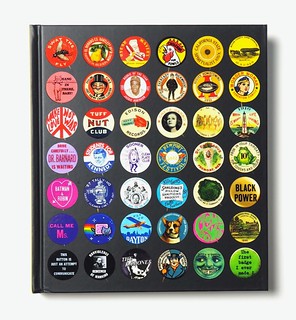 From the campaign trail to the rock tour, BUTTON POWER (Princeton Architectural Press) collects a people's history of American culture told through the pin-back button. Lively commentary from two of America's foremost button experts shows how the small but powerful button reveals the events and movements that outraged, amused, and inspired us over time, from the solo flight of Charles Lindbergh to the Black Power movement. Artists, athletes, actors, politicians, punk and pop musicians, and mascots of the past 125 years make cameos, including Rube Goldberg, Muhammad Ali, the Ramones, Shirley Chisholm, and Bette Midler are all covered in this book!
From the campaign trail to the rock tour, BUTTON POWER (Princeton Architectural Press) collects a people's history of American culture told through the pin-back button. Lively commentary from two of America's foremost button experts shows how the small but powerful button reveals the events and movements that outraged, amused, and inspired us over time, from the solo flight of Charles Lindbergh to the Black Power movement. Artists, athletes, actors, politicians, punk and pop musicians, and mascots of the past 125 years make cameos, including Rube Goldberg, Muhammad Ali, the Ramones, Shirley Chisholm, and Bette Midler are all covered in this book!
The first book of its kind, BUTTON POWER is a rich visual feast showcasing over 1,500 buttons. You can see how design and messaging have been used spanning over a century!
The buttons featured in the book are from the collections of Ted Hake and Christen Carter and a couple of their collector friends. They range from very common like the Book It! buttons given away by Pizza Hut since the 1980s to the very rare Cox/Roosevelt button from 1920.
Christen (the owner of Busy Beaver Button Co) has been working on this book for 10 years and she is beyond excited to share it with you all! Hopefully, her passion for human expression and community building through these small, shareable items will inspire you.
For more information, or to order, see:
BUTTON POWER : 125 YEARS OF SAYING IT WITH BUTTONS
(https://www.busybeaver.net/buttonpower/)
Check out the Button Museum sometime. The blog seems well done and interesting, with many articles on button history. -Editor
Hello! Thank you for visiting our online Button Museum!
Since pinback buttons were patented in 1896, people have found many ways to express their life events through buttons. We created the Button Museum to show how people commemorated noteworthy times in their lives by creating and collecting these wearable mementos. The words, artwork, printing style, color, and size were the final result of a vision they wanted to communicate or be a part of. Buttons tell a peoples' history like anything else!
The physical museum is located in Busy Beaver Button Co.'s office where custom buttons are made!
We also happily accept button donations!
Joel and Christen Carter
(brother/sister button making/collecting duo)
The Button Museum
3407 W. Armitage Ave.
Chicago, IL 60647
A big THANK YOU to Ted Hake who founded Hake's Americana, where you can find an amazing selection of buttons (and other stuff!) for your collection. You will be hard-pressed to find anyone who knows more about button history than Ted! He also started a site to sell some buttons tedhake.com, and has hundreds and hundreds for sale!
To connect with other button collectors, we belong to the APIC. We suggest you join, too!
The Button Museum is a 501(c)(3) non-profit...
The Button Museum relies on interns and volunteers, without them this wouldn't be possible. If you'd like to volunteer, email Rachel Esser, Archive Manager and Internship Coordinator, at internship@buttonmuseum.org.
The site lists a very impressive list of interns who've helped out. Long live button collecting! -Editor
For more information, see:
https://www.buttonmuseum.org/
https://www.buttonmuseum.org/about


